LIVING IN
June/July 2023
SO YOU WANT TO DO AN IRONMAN®?
The mostly true story of the author's first IM
SWEAT SAFE
Tips for exercisinig safely in Singapore's heat

FROM JALAN BESAR TO SINGAPORE SPORTS HUB
The history of sporting venues in Singapore
THE ART OF REPATRIATING
Tips on moving your things and your heart
MAGAZINE OF THE
THE
AMERICAN ASSOCIATION





who we are
It’s hard to believe we’re nearly halfway through the year already. We’ve had a busy year with the 87th George Washington Ball, The XCL American Academy Ambassador’s Cup Golf Tournament, an Easter Extravaganza, the launch of a softball team, and many smaller events and community service opportunities. We are gearing up for our big Fourth of July bash before we take a welldeserved break.
Join us on July 1 as we celebrate the USA’s birthday with carnival games, bouncy castles, a variety of food, adult beverages, crafts, popcorn, snow cones, cotton candy, a Dixieland band, and more. We’re excited to hold the event this year at the Bay East Bridge at Bay East Gardens, where we’ll be sheltered from the sun with a terrific view of Marina Bay. We hope you’ll join us for this evening, which will be tons of fun!
Our office will be closed for the rest of July, so we can rest up and return ready for a full slate of events this Fall. If you plan far ahead, mark your calendar for the 88th George Washington Ball, to be held on January 27, 2024, at The Ritz-Carlton Millenia Singapore. Ideas are brewing, and we’re already excited!
I want to thank our newest annual partners: The Ritz-Carlton Millenia Singapore; Art Works Advisory; 225SmokeHouse; and Brown-Forman. We’re happy to have you aboard! And thank you to our continuing
Finally, be sure to check out the member benefits section of the magazine for lots of
EDITORIAL
Editor-in-Chief: Susan Williams communications@aasingapore.com
Publishing Editor: Melinda Murphy generalmanager@aasingapore.com
LAYOUT

Graphic Designer: Susan Williams graphics@aasingapore.com
ADVERTISING
Advertising Manager: Thila Chandra thila@aasingapore.com
COLUMNIST
Andrea McKenna Brankin
CONTRIBUTORS
Sunayana Bose, Asif R. Chowdhury, Isaac Chua, Dr. Jeff Devens, Kyle D. Hegarty, Victoria Jurado, Jessica Kim, Amanda Lim, Melinda Murphy, Ken Nabors, Susan Williams, Kay Yin
AMERICAN ASSOCIATION BOARD MEMBERS
President: Ashok Lalwani
Vice President: Mkulima Britt
Treasurer: Naureen Rasul
Secretary: Jennifer Yarbrough

Directors-at-Large: Ed Fitzpatrick, Aaron Kim, Daniel Moss, Michelle Reeb, Priyesh Shah
AmCham: Dr. Hsien-Hsien Lei
AWA: Linda Schindler
SACAC: Jeff Majestic
SAS: Kyle Aldous
The American Club: Adam Radicic Non-Voting Members
US Embassy: Missy Downing
US Navy COMLOG WESTPAC: Rear Admiral Mark Melson
AAS: Melinda Murphy
PUBLISHER – AMERICAN ASSOCIATION
The American Association of Singapore (AAS) is a professional, notfor-profit organization established to enhance the well-being and living experience of Americans residing in Singapore and to promote relationships, both business and social, between Americans and those from different cultures and nationalities.
56A Boat Quay, Singapore 049845 • (+65) 8030 6183 admin@aasingapore.com • www.aasingapore.com
Living In Singapore magazine will be released six times per year, with the purpose of enhancing the expatriate experience in Singapore.
SUBSCRIPTION
A subscription to Living in Singapore is complementary with an AAS membership. AAS annual family membership is $120.
To join, visit www.aasingapore.com and have Living in Singapore magazine delivered to your inbox. Reproduction in any manner, in English or any other language, is prohibited without written permission. Living in Singapore welcomes all contributions of volunteer time or written material.
Editor-in-Chief
FOLLOW US!
Community News
28 So You Want to do an IRONMAN?

The story of the author's first IM.
34 Sweat Safe
Be prepared to safely exercise in Singapore's heat.


The Road to Singapore Sports Hub Learn about the history of Singapore's sporting stadiums.


What to do this Summer?
Some options for spending the summer in SG with
54 The Art of Repatriating Don't underestimate the challenges of returning home.

28 34 54 38 44
what’s in...
message from the president
 By Ashok Lalwani
By Ashok Lalwani
We are very excited to celebrate the Fourth of July. This year's festivities will be held on Saturday, July 1, at Bay East Bridge in Bay East Garden, near Tanjong Rhu, from 4:00 pm to 9:00 pm. It's a fantastic site with great views, sheltered from the sun and rain, and next to an even larger park. We will have food vendors, carnival games, a roving Dixieland band, drinks (both alcoholic and non-alcoholic), and much more. It will be a fantastic event with things back to normal after Covid. We are also looking for volunteers to help with the event. Details about the Fourth of July event and volunteering opportunities are on our website.
The Singapore American School is our lead sponsor for the Fourth of July. SAS has supported this event for many years, and we very much enjoy and appreciate their partnership.



Speaking of sponsors, we depend on sponsor support to carry out our many activities in the community. We recently welcomed The Ritz-Carlton, Millenia Singapore as a Patriot Partner, Art Works Advisory as a Stars & Stripes Partner, and 225SmokeHouse and Brown-Forman as Community Partners. They join our existing Patriot Partners, Singapore American School and XCL American Academy; Stars & Stripes Partners, Allied, Stamford American International School, and The American Club; and Community Partner, Sirva.
If your organization would like to support AAS and its mission as a sponsor, please get in touch with Melinda, our General Manager, at generalmanager@aasingapore.com. We would love to find a way to partner with you.
We look forward to seeing everybody at the Fourth of July celebration!
American Community Organizations Directory
AAS aasingapore.com
AmCham amcham.com.sg


American Dragons americandragons.sg

Scouts

BSA Troop 07: www.bsatroop07.org
BSA Troop 10: www.sgtroop10.org
AWA awasingapore.org

Navy League nlus-sgp.org

SACAC Sports safl.sacac.com

BSA Troop 1010: sgtroop1010@gmail.com

SAS sas.edu.sg
SAIS sais.edu.sg
The American Club amclub.org.sg
US Embassy sg.usembassy.gov
Cub Scouts Pack 3017: cubscoutsusa.com.sg
USA Girl Scouts: www.singaporeusagirlscouts.org

6 LIVING IN SINGAPORE
member benefits
225SmokeHouse

AAS members receive 10% off. Valid through 5/31/24.
AmCham Singapore

AAS members have access to select events, normally only accessible through corporate membership.
Core Holistic Nutrition

Get 10% off the initial consultation rate. WhatsApp: +65 8789 9064. contact@ coreholisticnutrition.com. Valid through 8/31/23.
Estheclinic

15% discount for all treatments. Valid through 12/30/23.
Expat Dental
AAS members enjoy a corporate partnership. Contact Expat Dental for details on pricing.

Expat Living magazine

Free six-month subscription. Valid through 12/30/23.
Hard Rock Cafe

15% discount on food and beverage upon showing a screenshot of your membership. Valid through 12/30/23.
Hedgers Carpet

Free high-quality underlayment with every purchase at our store (while stocks last). Valid through 12/15/23.
Lawry’s The Prime Rib

15% discount for à la carte food bill for dine-in only. Blackout dates apply. Valid through 12/20/23.
Maharaja's
AAS Members enjoy 15% discount off tailor-made clothes (Men & Women) at their two outlets. Valid through 12/30/23.

Motorist

15% off car insurance quotes. Valid through 8/31/23.

New World's End

AAS members enjoy a 10% discount. Valid through 12/31/23.
Poke Theory
AAS members get a 10% discount. Flash your membership profile to the friendly staff to redeem this perk! Exclusively at Katong Square #01-12. Valid through 12/30/23.
PrimeTime
Female AAS members enjoy 10% off published rates for PrimeTime events.

Raffles Hotel
20% discount at Raffles Spa Mon-Thu; 15% off regular-priced items at Raffles Boutique & Floral Boutique; 15% off total bill at Raffles restaurants. Blackout dates apply. Valid through 12/22/23.

Solescape

AAS members enjoy 15% discount on initial consultation at Family Podiatry Centre and 10% discount on their purchase of a pair of shoes. Valid through 12/30/23.
Telunas Resorts

Book a minimum 2-night stary at Telunas Private Island or Beach Reosrt to enjoy a complimentary 60-minute massage for 2 adults. Valid through 12/19/23.
The Counselling Place

AAS members enjoy 10% discount for their first session. Valid through 12/30/23.
The Residence Bintan

AAS members get 15% off Best Available Rate, 10% off Recreational Activities, 10% off Spa Treatments. Valid through 12/30/23.
Winesave

AAS members get 15% off Winesave PRO and Avina Champagne and Wine stoppers. Valid through 6/20/23.
Zest
AAS members enjoy 15% off first-time purchases. Valid through 9/30/23.
Scan or click here for our full member benefits page and more details on each benefit.

LIVING IN SINGAPORE 7
American Association Sister Organizations

Click Through to Find Out What’s Planned at AAS and at Our Sister Orgs
American Association of Singapore



AmCham
American Women’s Association
Navy League
upcoming events

SAFL
The American Club
US Embassy
The AAS office will be closed for a summer break beginning July 1, 2023, reopening August 1, 2023. Keep an eye on our website for new events as they are added!


AAS Strategic Partners

Welcome to our new annual partners, and thank you for the continued support of our returning sponsors!


Patriot Partners
Stars & Stripes Partners
Community Partners

8 LIVING IN SINGAPORE
THE LEADING NAME IN ACCOUNTING SOLUTIONS





O u r F r a c t i o n a l F i n a n c i a l T e a m p r o v i d e s b u s i n e s s e s w i t h a c c e s s t o e x p e r i e n c e d f i n a n c i a l p r o f e s s i o n a l s p a r t - t i m e O u r t e a m c o m p r i s e s e x p e r t s i n a c c o u n t i n g , b o o k k e e p i n g , f i n a n c i a l a n a l y s i s , a n d m o r e W e w o r k w i t h y o u t o u n d e r s t a n d y o u r b u s i n e s s ' s u n i q u e n e e d s a n d p r o v i d e c u s t o m i z e d f i n a n c i a l s o l u t i o n s t o h e l p y o u a c h i e v e y o u r g o a l s
Y o u w i l l g e t a 2 0 % d i s c o u n t o n y o u r f i r s t t h r e e m o n t h s ' f e e s i f y o u u s e t h e d e d i c a t e d c o d e p r o v i d e d b y u s





D i s c o u n t A 3 0 - m i n u t e a d v i s o r y s e s s i o n t o a d d r e s s y o u r a c c o u n t i n g a n d f i n a n c i a l r e p o r t i n g i s s u e s d e t e r m i n i n g e r r o r s
5 - S t a r S e r v i c e
F r e e C o n s u l t a t i o n Y o u w i l l g e t a t e a m w h o t r u l y u n d e r s t a n d s y o u r b u s i n e s s a n d c a n d o m o r e t h a n j u s t t h e b o o k s w i t h o u t c o s t i n g a t o n
AITFCC helps individuals and couples address difficult relationship and life issues.
+65 9030 7239 WhatsApp preferred All in the Family Counselling Centre Pte Ltd AITFCC Ad.indd 1 7/21/22 2:59 PM
We specialize in difficult cases related to anxiety, depression, infidelity, anger and life transition. We provide sleep help through product Babysleepfairy. We have a portal, www.mynewbeginningsclub.com, and a wide range of hours. Contact us now. Tammy M. Fontana, MS (USA) NCC CTRT, clinical Sex Therapist (USA) www.allinthefamilycounselling.com tammy@allinthefamilycounselling.com
W h a t s a p p + 6 5 9 3 2 7 1 9 6 6 s a l e s @ p i k o h a n a c o m
AAS members teamed up with the Stamford American International School community to do a block walk in Potong Pasir. The group collected lots of trash and helped to clean up the neighborhood. Way to go!

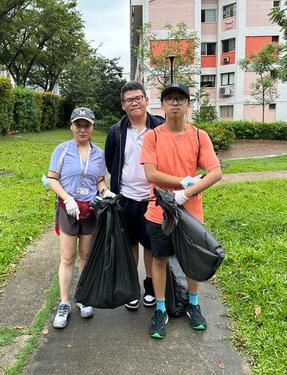
See more photos here.

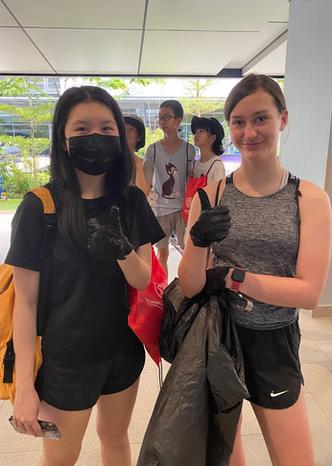
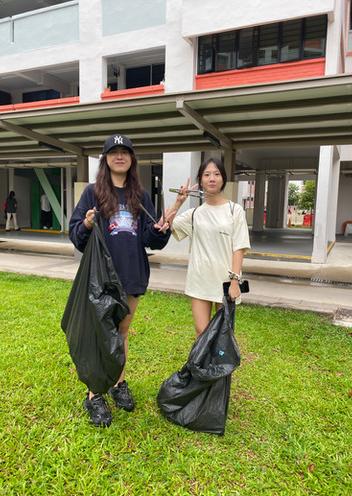



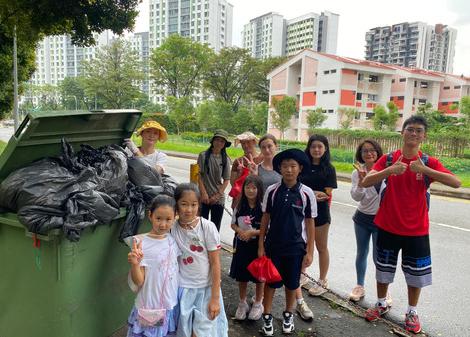
We had a hoppin' good time at our Easter Extravaganza, hosted by XCL American Academy! A bunny hop, spoon races, and crafts were enjoyed by kids, followed by a fun Easter egg hunt that took us all around the school. We had a terrific pancake breakfast, with Bloody Marys for the adults, courtesy of Brown-Forman. The Easter Bunny even made an appearance, much to the delight of everyone there!
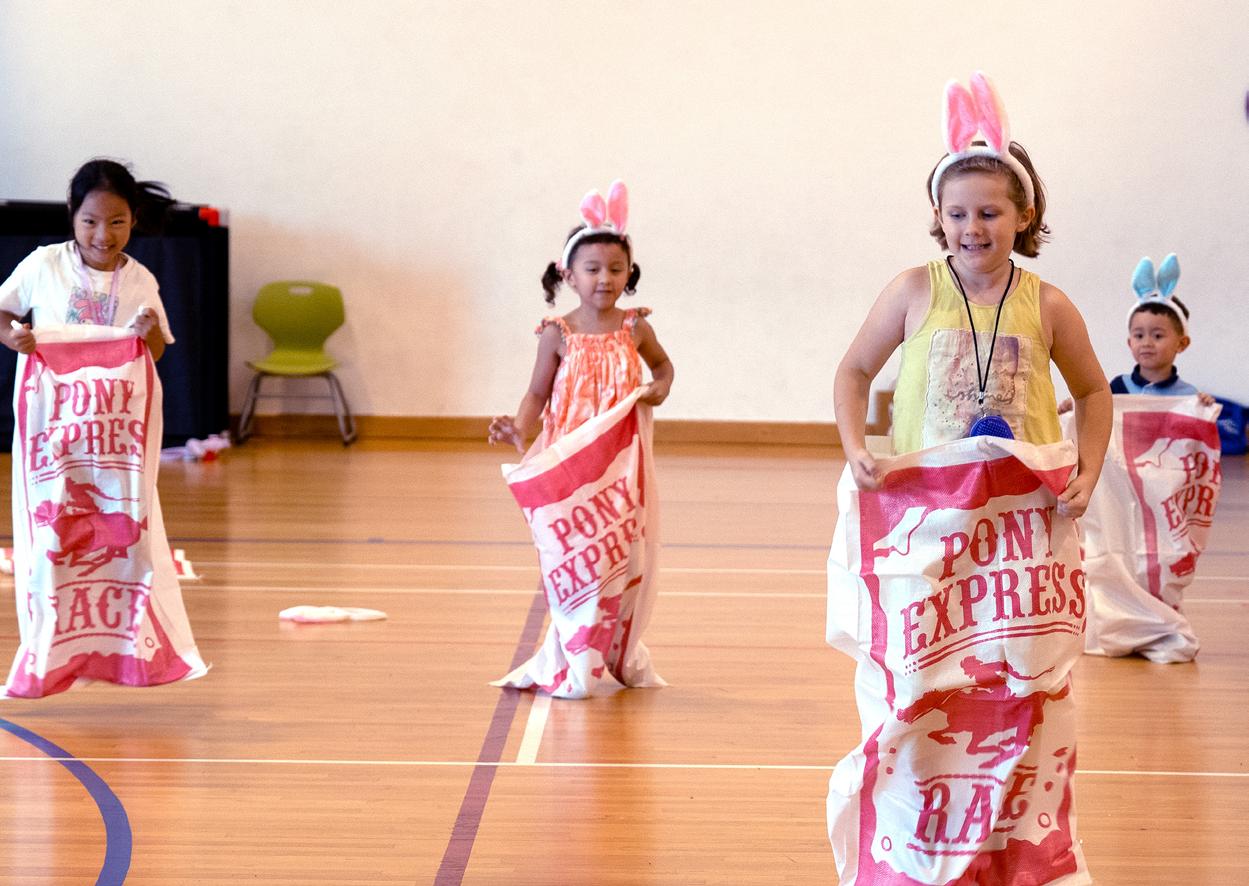



See more photos here




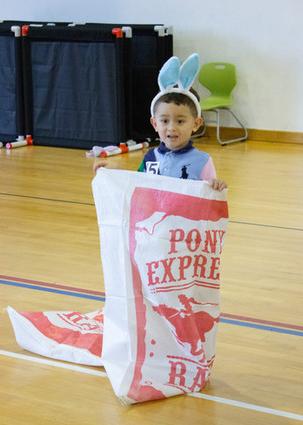
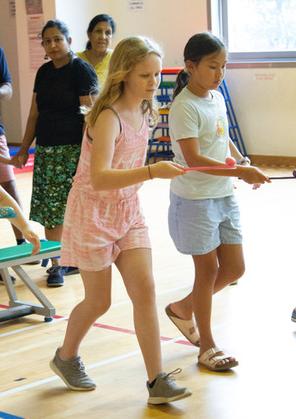






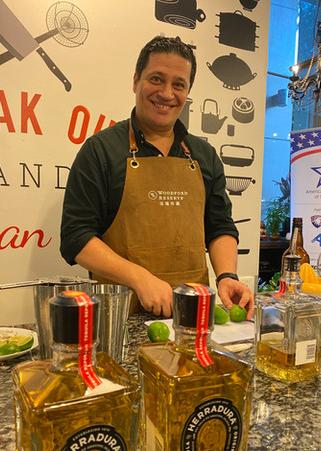
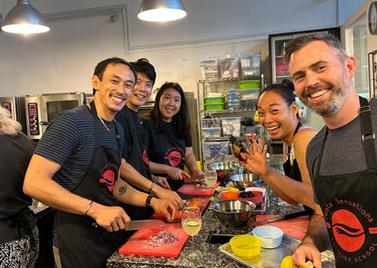
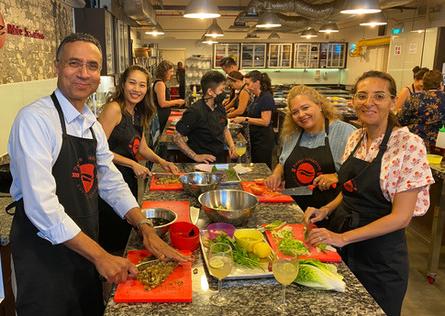
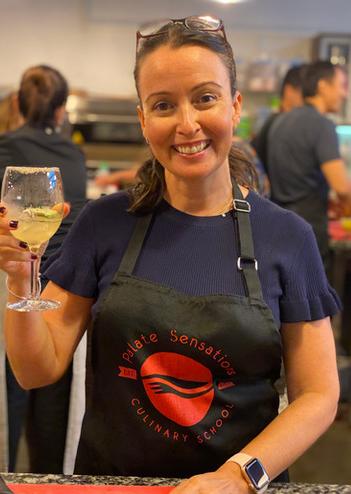

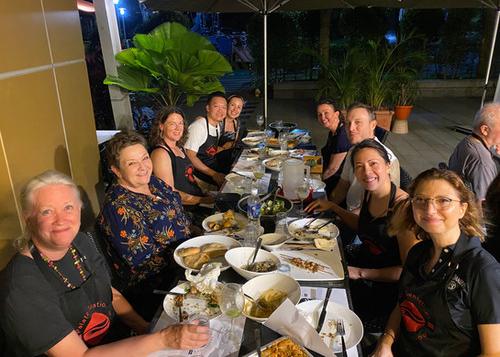
We held a Turkish cooking class to raise funds for earthquake relief in Turkey and Syria. Not only was it fun to get together and learn about and how to make Turkish food, the event was for a great cause! We raised $2,500 to donate through the Singapore Red Cross.



After cooking, we were able to sit down and enjoy the fruits of our labor, accompanied by cocktails generously provided by Brown-Forman.
See more photos here.
My First Year of Scouting























 By Victoria Jurado, BSA Troop 1010G
By Victoria Jurado, BSA Troop 1010G








I had the most eventful year as a first-time Scout. I got to go camping a lot, complete many requirements, and so much more! Achieving the Tenderfoot rank helped me realize the importance of this program and how much one can improve leadership and survival skills through Scouting. Being a Scout is a fantastic opportunity. I get to learn about all the different activities we do to earn rank advancements and the requirements needed to obtain the merit badges, which show off our Scouting achievements and knowledge. I learned about my troop, patrol, and how to camp safely. Since we don’t have a lot of female Scouts in Troop 1010, we combine into one troop with the boys in Troop 10 for many activities. That is a good thing because I feel it's easier for all of us to meet and cooperate, which helps us develop better teamwork.
I have always looked up to Sophia, who is now the first female Eagle Scout in Singapore, which is impressive. I try to follow her and ask her any questions when I need help. I have done many requirements to reach my current rank, and I will keep up so that one day I become an Eagle Scout like Sophia. I am really enjoying my first year of Scouting. Besides the campouts and requirements, I love cooking and having fun with my new Scout friends while earning merit badges. I am having a wonderful time as a female BSA Scout.

I go on most camping trips, and I will say one word about them: fascinating. We do so much in every campout to meet the requirements to earn rank advancements and merit badges. These requirements include first aid, emergency preparedness, cooking, and building bonfires. My personal favorite part of camping is cooking. I always try to be a grub master, but if not, I always help the people in charge of cooking. I also enjoy doing requirements because they advance my rank, and some are really fun! The experience of camping is amazing. We usually get a fantastic view of where we're camping, take hikes, and play games in the area.

I started as a den chief, helping younger Scouts, when I first joined Troop 1010, and today I am still doing it. There are a lot of roles in Scouts, such as den chief, patrol leader, librarian, and many more. I would like to be a librarian if I were no longer a den chief. This year would not have been the same

without BSA leader Ashley Jurado, my mom. Her dedication, support, time, patience, and drive kept me motivated and on track to achieve what I completed in my first year. I am looking forward to what my second year in Scouting will bring.
Victoria Jurado is a Tenderfoot Scout and den chief in Troop 1010G at SAIS.

Closing Ceremonies































 By Susan Williams
By Susan Williams



Girl Scouts have finished out the school year strong. At our closing ceremony, we honored many girls who earned higher awards, including Gold Award winner Jessica Kim. Jessica told us about the project that earned her a Gold Award (which you can read about in just a few pages) and encouraged the younger girls to make the most of their scouting years.

We also heard from Grace Park, who shared her journey from a Girl Scout to a student at The United States Military Academy at West Point to the co-founder and president of DocDoc. This company connects patients with doctors. Grace shared her experience as a Girl Scout and inspired girls to take what they learn in scouts and apply it to every aspect of life.




Many of our troops bridged up to the next level, teaching the girls younger than them and learning from older ones. As always, we ended the ceremony with a gigantic friendship circle!
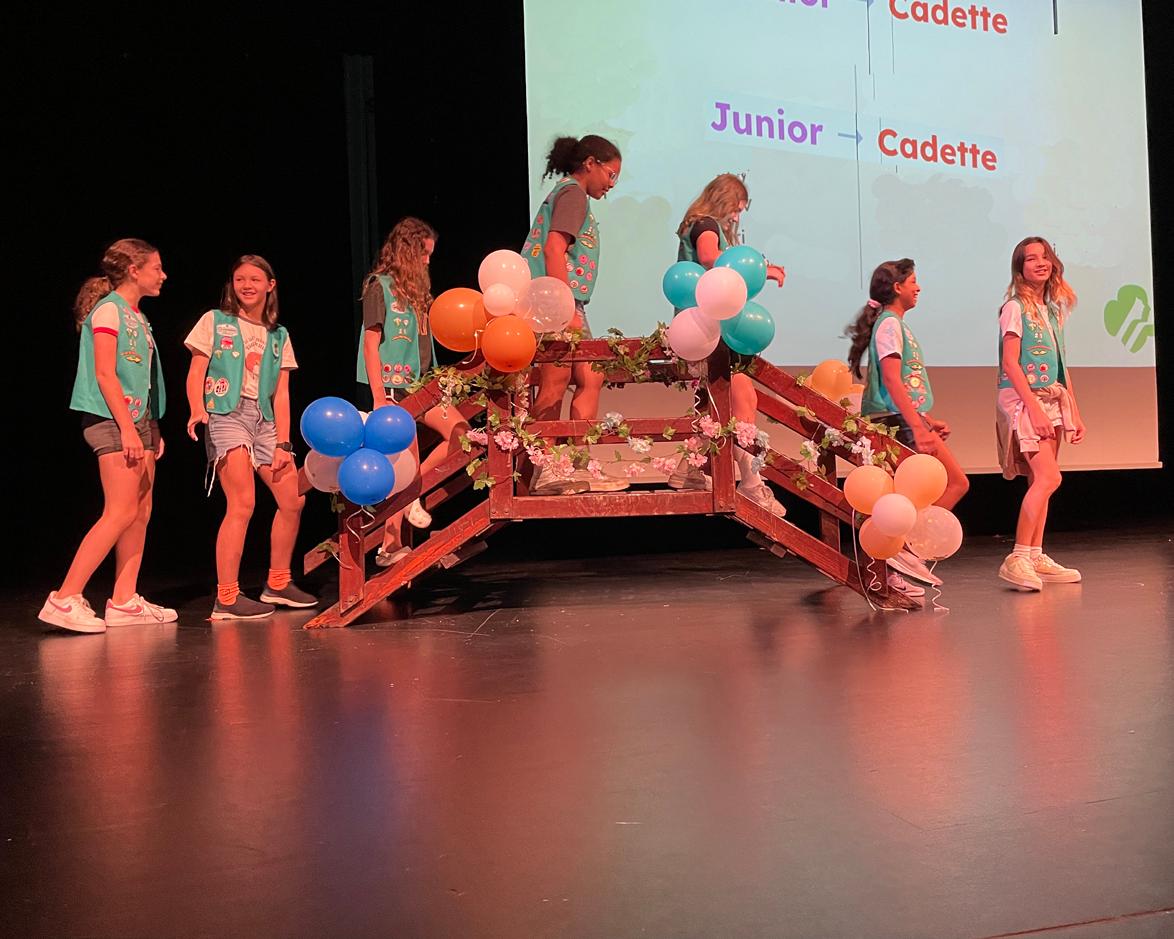


We still have a lot planned, including two summer camps for girls sticking around Singapore. In the fall, we will celebrate our founder, Juliette Gordon Low, and hold our annual father-daughter dance, which is always a favorite. Troops will undoubtedly embark on exciting field trips, go camping, climb rock walls, conduct science experiments, serve their community, and have fun while doing all of it.


Registration is open now for girls ages five to 18. Join us, and make friends for life! Visit www.singaporeusagirlscouts.org for more information.

Hiking in Mongolia
 By Isaac Chua, BSA Troop 10
By Isaac Chua, BSA Troop 10

















My name is Isaac Chua and I am an Eagle Scout from BSA Troop 10. I have had the pleasure of being in two different troops and experiencing the different dynamics, having only recently returned from Shanghai after spending eight years in active scouting there. Today, I would like to challenge everyone by asking you a question: "What have you been doing to stay active and get moving recently?" I stay active as a competitive swimmer, working very hard each day in the pool because each training session adds up to performance. Sometimes I get tired from the repetitive daily training and break from the routine by trying something new over the weekend. Scouting has taught me many skill sets while exposing me to fun activities. It has allowed me to find out what are things that I enjoy.














For example, I was introduced to hiking through scouting, an activity I’ve come to love and form many joyous memories by doing. Last year, I traveled to Yunnan, Dali, to experience the wonders of its famous Erhai Lake as I embarked on a 20-mile hike exploring the beauty of its serene nature. On another occasion, I traveled with my Troop to Inner Mongolia to take multiple hikes within the Gobi Desert and the grasslands. It was a most unforgettable adventure – walking on sand dunes was very different, and we had to avoid stepping on cow dung which cluttered the grasslands. It all added to the effort we had to put in, and it was far more laborious than hiking in cities, not to mention the weather!



As we hiked, the weather could go from sweltering hot (as if you’re slowly being boiled in your sweat) to rainy, then the strong gales would form miniature sandstorms, and then back to the scorching heat. In fact, on one particular day, as we were camping by the grass plains, we were hit by the worst thunderstorm and sandstorm. Even the rangers didn’t anticipate the drastic, sudden adverse change in weather conditions. As we were sleeping, the thunder never stopped nor the rain plummeting to the earth, followed by loud crashes and electrifying flashes across the horizon. And to our horror, it mingled with strong, howling winds to accompany the light display! It was so dreadful that some scouts who forgot to secure their tents properly had their tents blown away when they got out. The following day some of my fellow junior scouts joked, saying it was like the end of the world for them and that they were thankful to be alive.
Although my journey in Inner Mongolia was very challenging, it was eye-opening in a good way. I still vividly remember my experience, excitement, curiosity, extreme fatigue, and fear of unknown and unpredictable weather! Yet, through my experiences, I learned not to be scared of trying out new things. Sometimes, they might surprise you and give you the wildest stories to tell!
While I may have relocated back to Singapore and joined a different Boy Scout Troop, I know that the experiences I’ve gained via scouting will always stick with me and impact my life. I recently went out with some of my friends from school to try out a kayaking course. During the course, we learned the basic paddle and rescue techniques to help each other when we capsized. We have achieved a kayaking certification so that we can go out kayaking together in the future.

By sharing my experiences, I hope you have been inspired to break out of your comfort zone and try something new. Whether signing up for a new learning course, gathering with friends to do activities together, or setting yourself up to learn a new skill, the unknown may be frightening, but as Neale Donald Walsch once stated, “Life begins at the end of your comfort zone.”

Cub Scouts Pack 3017 – Spring/Summer 2023






































 By Kay Yin
By Kay Yin

Cub Scouts Pack 3017 is back in full action after three years of Covid restrictions!

Our Scouts of Pack 3017 had their amazing campout with everyone at Camp Sarimbun back in January. Not only did they participate in a 75-minute archery lesson led by the Camp Sarimbun team, but the Scouts also worked on rank activities and outdoor skills such as knot tying led by den leaders. A pack overnight campout is a great way to get to know the families in the pack and work on outdoor adventures.
In February, our Scouts were honored to be able to help out at the Food Bank Singapore. Doing service projects together is one way that Cub Scouts keep their promise “to help other people.” While a scout should do his best to help other people every day, a group service project is a bigger way to help people. Over a span of several days, our Scouts learned to work together to sort and pack donated food products and help distribute them to those in need in our community. Additionally, our scouts collected roughly 650 kg of donated food products and raised more than $2000 for Food Bank Singapore.
In March, our Scouts also had a great day cycling in the East Coast Park at our Wheel Day. They learned about road safety and the proper equipment needed and enjoyed a beautiful spring day out with family and friends. Singapore offers plenty of great bike trails for easy and safe cruising while we enjoy the great nature.
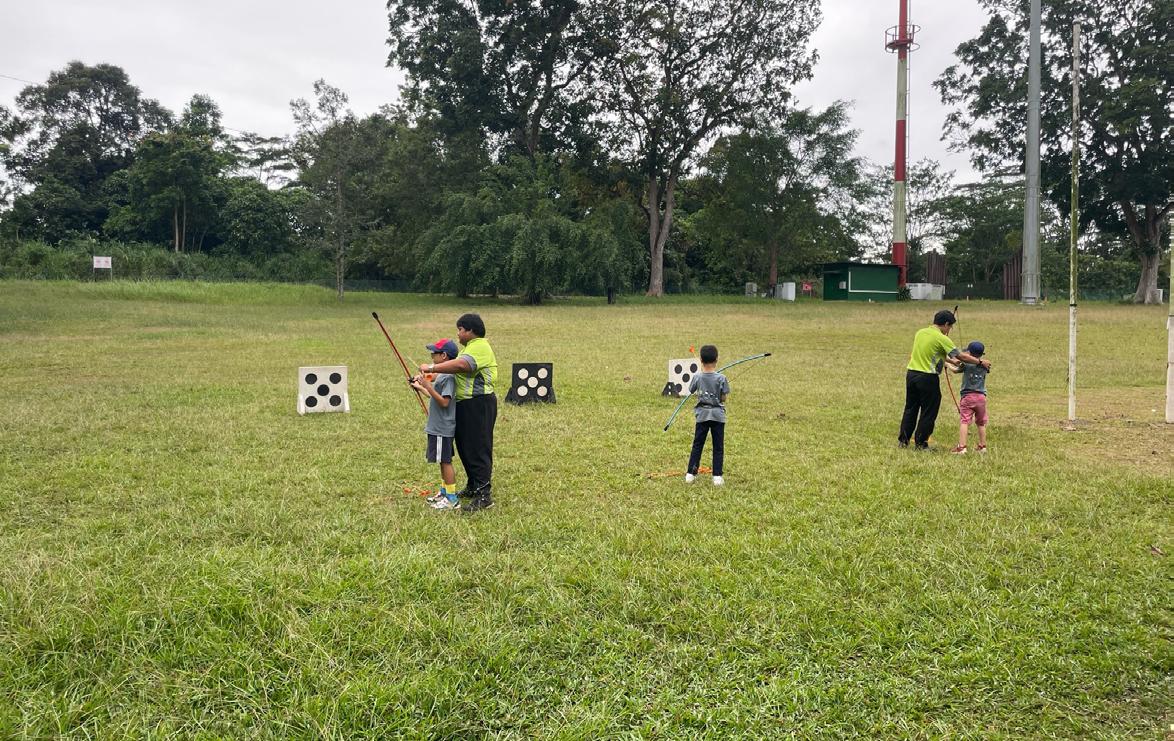
In April, the Scouts were able to participate in the Pinewood Derby for the first time together since Covid. Pinewood Derby is a wood car racing event where the Scouts are given a block of pine wood, plastic wheels, and metal axles. Without using power tools, Scouts are given two months to make a custom car that must meet weight, height, and width regulations that will then be raced down a 45-foot track. The race is typically timed, but the cars are also judged on other categories, as some are built for speed, and others are made more for cool design. This year, we were able to hold this event with all our Scouts at Singapore American School. The winning Scouts received trophies, and each scout also earned a badge for their uniform!
Our Scouts ended the year with the Blue & Gold ceremony on May 13, which is the culmination of our scouting year, where we recognize the efforts our Scouts have made by awarding their rank badges, passing out annual Challenge Coins, and recognizing other scouting achievements.


If you’d like more information about our pack, please contact us at sgpack3017@gmail.com and check us out at American Cub Scouts Pack 3017



Teaching the Holocaust: A Girl Scout Gold Award
By Jessica Kim
I first learned about the Holocaust and World War II in fourth grade when Jennifer Brinton, a SAS teacher, read Lois Lowry’s Number the Stars to our class. It is the remarkable story of a Jewish family that fled Nazi-occupied Denmark with the help of their friends and neighbors during WWII, which inspired me to read more books about the Holocaust. Eventually, this interest led to my National History Day group project in eighth grade about the impact of art therapy on children in the Terezin Ghetto under the guidance of Matt Elms and Jennifer Koltutsky.
Later, in my AT Research & Catalyst class under Jason Adkison and Rob Larson, I had the opportunity to research an area of interest. I chose to conduct a hermeneutic phenomenological study of the clandestine education in the Terezin Ghetto during the Holocaust.
Around the same time, I started thinking about how to pursue my Girl Scout Gold Award, which challenges older Girl Scouts to create and make a sustainable change in their community and worldwide. As a high schooler, I was
surprised to discover that some of my peers had not heard of the Holocaust. I realized that Singapore American School had no formalized time from kindergarten through twelfth grade when students would each learn about genocide or the Holocaust.

Throughout my junior year, with the help of elementary, middle, and high school educators, I created lessons for our 600 fourth and fifth graders to learn about the Holocaust and the implications of anti-Semitism. SAS upper elementary school librarian Kate Brundage and elementary school curriculum coordinator Joanne Brown were incredibly generous with their time and helped me develop lessons aligned with fourth and fifth-grade social studies standards.
In addition to the amazing team at SAS, I worked with Teach the Shoah’s president, Deborah Fripp, and the United Hebrew Congregation’s Rabbi Miriam to ensure my content was accurate, age-appropriate, and engaging.
20 LIVING IN SINGAPORE
After getting my project approved by the Girl Scouts headquarters in New York, I spent three months developing slideshows and creating video lessons. Then, for four weeks following our 2022 spring break, I spent my free blocks sharing lessons with the fourth and fifth graders during their weekly library lessons. Ultimately, the discussion and storybased lessons explored how people persisted despite enduring tragedy and how society allowed the Holocaust to occur.
The first time I faced sharing a Holocaust story with a classroom of 22 fourth graders, I felt a tinge of apprehension that perhaps I had misjudged my audience. But I was proud to find hundreds of curious students eager to learn more.

I’m incredibly grateful for the support I’ve found within the SAS community to explore my passions and share them with others. And I am hopeful that these lessons, which will be an option for fourth and fifth-grade teachers to utilize in their classrooms, will provide a safe, structured environment to learn about such an important topic.
The Girl Scout Gold Award is the highest award in Girl Scouting. Girls must devote at least 80 hours to the project, fulfilling a community need. The project must be sustainable, meaning that it will continue after the completion of the project.
To learn more about Girl Scouts in Singapore and the many ways to get involved, and get on the path to gold, visit singaporeusagirlscouts.org.
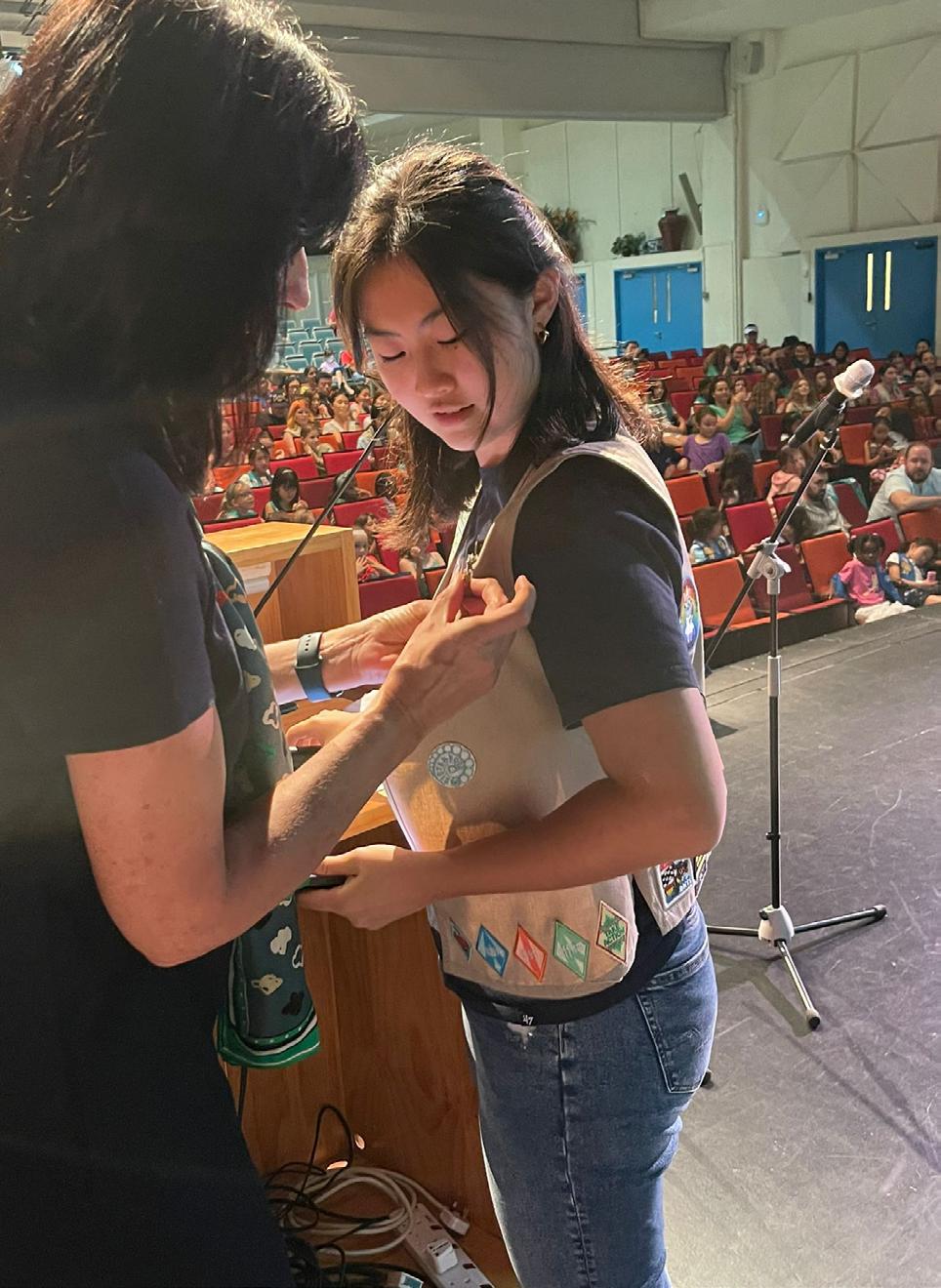
Moving In, Setting Up, Settling Down
By Singapore American School High School Personal Academic Counselor Dr. Jeff Devens
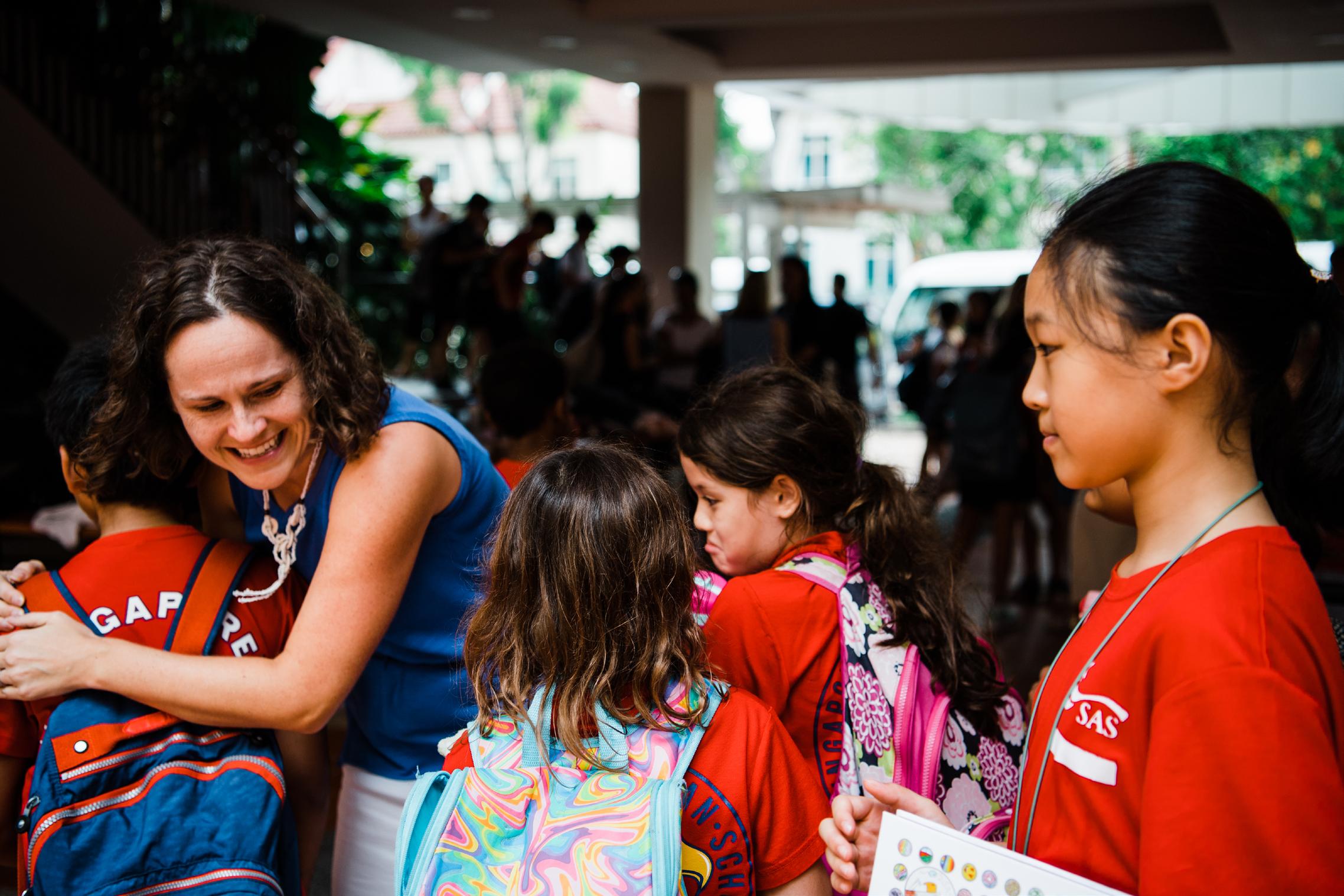
“It’s not because I have received a better education, but a broader education that I can tell my cousins that Georgia is not only the name of a state but also the name of a country. I have had more of an international experience, and this has significantly changed my outlook.”
—Katie, 17 years old
According to your circadian rhythm, you should be awake. The only problem…it’s 2:30 in the morning! Sitting on the floor of your unfurnished apartment, attempting to assemble an IKEA bookshelf with the semi-functional tools provided, you wonder aloud, "Is this really home?"
I remember the impressions of our first international move almost three decades ago. In the span of 24 hours, we went from sunny, clean, efficient, predictable Minnesota, USA, to the wonderful zaniness that is Beijing, China. Talk about contrasts! Walking through the old Beijing airport felt like we had passed through a wormhole transporting us to a bygone era. With green military paint peeling off the airport walls, contrasted sharply with the bright red communist star on the ceiling, we knew we weren’t home in any sense of the word. What began as a two-year overseas experience has grown into 25. Having lived in China, Saudi Arabia, and most recently, Singapore has afforded us wonderful life-enriching experiences, experiences that have forever changed us.
For some, this is your first international posting or deployment; a few of you may even have searched Google Maps to locate where you were moving. For others, you’re seasoned veterans.
22 LIVING IN SINGAPORE
Your current posting is but one of several you and your family have called home. In either case, kids and parents go through a series of stages as they transition into a new culture, school, and country. Awareness of these stages can help reassure parents that what they and their kids are going through is normal.
Stage 1: Settled
This describes your status prior to your move. For children, this means they are attending a school, have a predictable routine, have peer groups established, and are engaged in the community. Generally, they’re responsive and responsible. Adults, too, have established patterns in place: their commute to work, the stores they purchase goods, and their favorite coffee shop. In short, life is predictable.
Stage 2: Leaving
At some point, a decision is made to move. This may have come with several months’ prior notice or within the last few weeks. Leaving is a time of saying goodbye and disengaging. Kids and adults experience a range of emotional responses during this time, including excitement, joy, anticipation, anxiety, denial, anger, resentment, bargaining, sadness, and loss.
Stage 3: Honeymoon
Upon arriving in an unfamiliar cultural context, the common tendency is to look for what is familiar and establish a routine. This is also a time when others extend themselves, welcoming new families. Kids tend to feel pretty good and generally function at a high level. The honeymoon stage typically lasts ten minutes to two months.
Stage 4: Disorientation
For many, the more they interact with the host culture, the more they become disoriented and melancholy. The primary reasons for this are the loss of social support systems (friends, family, community) and lack of predictability. People may experience a range of emotional responses: mourning the loss of friends, feeling isolated, exaggerating problems and behaviors, feeling tired
and grumpy, judging the host culture negatively, and refusing to connect. It’s not uncommon for kids to want to stay tethered to friends in their previous home and not make new friends. Holing up in their bedroom, they may spend significant amounts of time communicating with their old friends online. They may also struggle academically during the first quarter or semester of school. During this stage, parents encounter the most difficulties related to the move. A particular holiday, time of year, birthday, or other significant event can trigger strong emotional responses. This period usually lasts from one to six months and sometimes can flare up anew when parents return home for that first long holiday break.
Stage 5: Recovery and Adjustment
As kids continue to interact with their new culture, they begin to incorporate their understanding of themselves, school, friends, etc., and start to feel at home. Their level of pre-move functioning typically returns to normal, sometimes even higher than normal levels, because of all they have learned about themselves and the world. The benefits of this include increased social maturity, a broader worldview, less prejudice, and greater cultural and religious tolerance.
An important point to note regarding these five stages, one that may further complicate the transition process, is that each of your family members will go through them at different times. There may even be periods when kids vacillate between them. What’s important to keep in mind is that what they are experiencing is, by and large, normal and part of the transition process.
Note: I am indebted to David Pollock and Ruth Van Reken for their seminal work on understanding the transition process: Third Culture Kids: Growing up Among Worlds — a must-read for international families.
Dragon Boating with Americans American Dragons Singapore 新加坡美国龍舟队

 By Ken Nabors
By Ken Nabors
The American Dragons (Singapore) (“ADS”) is a Singapore-based, competitive Dual Paddle Club affiliated with the American Association of Singapore. We are an inclusive club with over 100 active members of all ages, over 30 nationalities, and derived from highly diverse professional backgrounds. As one of the few clubs in Singapore, we offer dual sport paddling, running dragon boat training from the Kallang Nursery, and outrigger canoeing from Sentosa. Our main bar sponsor is Ice-Cold Beer, and our sponsor beer is Carlsburg.
Since its humble beginnings in 2005, the American Dragons became repeat Dragon Boat champions of the International Business Community in Singapore and established itself as an internationally recognized paddling club. Nowadays, we are very much a part of all major Singapore paddling events and many overseas races. We have a history of winning races and have a good time doing it.
24 LIVING IN SINGAPORE
Are you an American living in Singapore? Do you love the outdoors? Are you looking for a fun and challenging way to stay active? If so, check out our AMERICANS' DAY on Saturday, June 3rd!


This event is open to all Americans of all ages and fitness levels. No experience is necessary.
From 3:00pm to 6:30pm, we'll introduce you to the sport of paddleboarding. We'll teach you how to paddle correctly, and we'll take you on a workout on the water. You’ll enjoy incredible views of Singapore's amazing skyline along the way.
After the workout, we'll have some light snacks and ice-cold beer to cool us down. You'll also have the chance to meet a whole bunch of new friends. By the end of the day, you'll be signing up for the next session!
So what are you waiting for? Register for AMERICANS' DAY today!
We can't wait to see you there!
HEAD SPACE
and how it relates
“Comfortable Depression” Sends Up Red Flags
Heading for the Comfort of Home? Depression Has That Element, Too
It’s that time of year, summer, when many of us expats are flying headlong into our family events and hometown locales. These are comfortable places, and we all relish the scents, sounds, and tastes of home with lots of hugs. We settle into our summertime comfortable places and enjoy it.

But in my life writing about mental health, there’s something some find surprising. And weird. It’s called “comfortable depression.” This occurs when you get used to your depressive routine. And it can be a pretty hard habit to break – even though depression is a chemical imbalance that affects our emotions, not so much a habit. But feeding this habit by getting comfortable with it sends up the red flags that we need some help and changes need to be made.
For example, my husband went away for about three weeks in late Spring. Initially, I was relieved to have a little space, sleep in more, eat whatever or not enough, drink all the wine instead of sharing, wear pajamas all day, skip workouts, cancel plans with friends, blow off doctor appointments – oh wait, do you see where I’m going with this? This is not normal. This is what comfortable depression looks like. I fell into a routine of withdrawing from my life. The change in my family dynamic and routine triggered a depressive episode. Major sigh.
It is hard to explain, but I’m trying to share it with my friends and supporters, so we’ll all learn together. It’s one thing to come home, don sweats and slippers, and chill out with a glass of wine. But if you’re like me, and you know you have the predisposition for depression (as I do with bipolar disorder—half depression/half elevated mood), it’s essential to mitigate depression’s deteriorating effects on your life when they emerge as a pattern.
It was my health coach and personal trainer, Amanda Lim (you may have seen her writing here in LIS magazine!), who listened to my current status and said something along the wise lines of, “I know I’m not a psychologist or psychiatrist, but this sounds a lot like depression. Let’s not ignore it.” So, it was this switch that was flicked on by an outside supporter that helped me turn things around.
If you feel any of these debilitating symptoms where you feel comfortable being depressed or withdrawn, please talk to a trusted friend, family member, experience peer (like me), or especially a medical doctor or therapist. In times like these, we must be brave and take steps to help ourselves. And if it’s any consolation, if I can do it, you can do it. Let’s work to save comfort for when we can get the most out of it as a nice break, not a long break from living your best life.
26 LIVING IN SINGAPORE
Welcome to the Head Space column, where we’ll discuss all matters related to mental health
to our lives here in Singapore. By Andrea McKenna Brankin.

So You Want to Do an IRONMAN?
The mostly true story of my first IRONMAN race
By Kyle D. Hegarty
Triathletes are those dead-eyed fathers at the dinner table or school events, fidgeting, lean, and distracted, constantly gripping a water bottle and searching for a place to stretch their calf muscles. They are the women in conference rooms eating berries from a plastic bag under the table, ignoring the world around

them, thinking only about when they will get their next running fix. These lunatics will spend their kids’ education funds on new bike wheels. Let’s face it; we are bad people.
So, if you are ready to join our cult, read on for tips, tricks, and encouragement as you train and complete your first IRONMAN.
Triathlons are all about training. Training requires planning. Planning is best done at a bar over many pints. It’s the best way to get creative and “envision the finish line,” according to personal trainers and coaches. Yes, visualization is key.
Now that you have visualized, you will need to train with the right kind of people. Avoid experienced triathletes who know what they are doing. It’s best to find ex-army types. The grungier the foot-soldier, the better. This is because these people are already nuts, and many of them either were born without an off switch or learned to ignore that voice in their head that occasionally says “stop.” These army types are essential because they rarely train enough and will make you feel better every
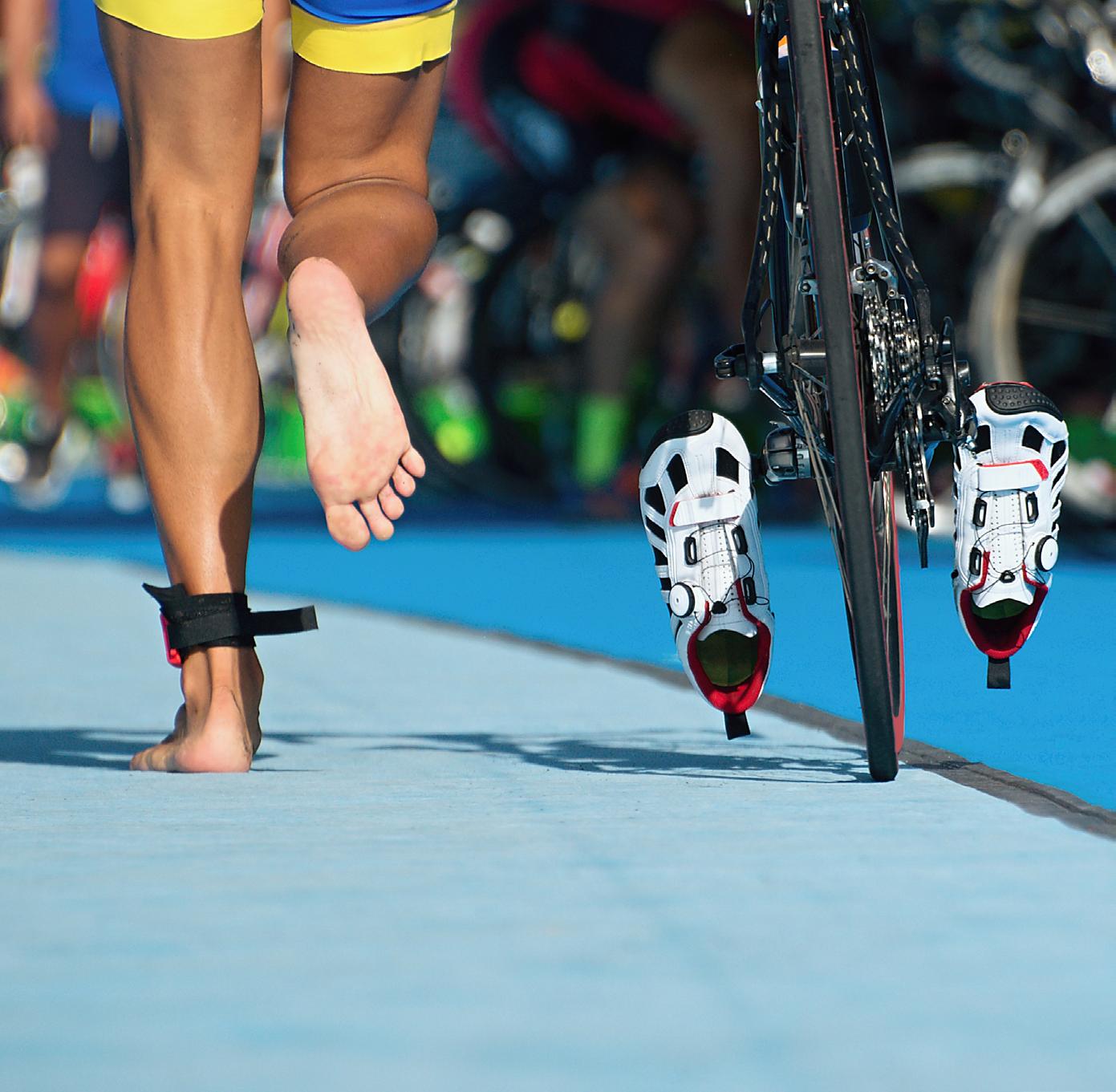
time you roll over, ignoring the alarm clock for that 4:30am bike ride.
You can spot these people during races, especially on the running leg, because they look completely miserable. It’s the look of someone who spent more time at the pub visualizing than on-the-road training. They get the job done, though, bless them. Find one of these oddballs at a finish line, buy them a pint, and you’ll have your training partner.
Now you’ll need to register for a race. Here’s a tip, when the registration page asks you to write the name on your running bib, avoid the temptation to write some wise-ass name, like “Sugar Daddy” or “D**chbag.” It may be funny when you register, but as you are on mile 17 and some eagle-eyed spectator yells out, “Keep going, D**chbag!,” this quickly gets old. Stick with your name or a fake normal name in case you are hiding from work, family, or the police.

Training. Eventually, you will have to do this.

Diet is another critical piece of this puzzle. I like to say I follow the “half it / double it rule.” If something you consume is bad for you, then cut the amount in half. Alcohol, processed sugars, and carbs. Anything good for you – vegetables, grains, lean proteins, etc. – double them. Don’t be afraid to get creative here. Beer is obviously high in carbs, so try switching to hard alcohol. Vodka, whisky, and gin will help you get started. Fruity mixed drinks are a no-go, so save the margaritas for the post-race victory party. If you want to “cook the books” a bit, consider increasing your alcohol intake for a week or two before starting your training. That way, cutting your consumption in half won’t be as difficult. You will notice your ex-army friends won’t be doing any of this. Remember, they are there for support and to ensure you don’t turn into a real triathlete.
Be familiar with your gear, specifically your bike. If you get a flat during the race, you are responsible for changing the tire. Now, you may know how to change a bike tire, but do you know how to do it after a giant swim and 50-plus miles of riding? Arms and hands get wobbly, and fingers tend to tingle. To prepare for this, practice changing tires drunk. This will help simulate race-day conditions.
Race Day
This is your big day. You’ve talked about putting in the hard work, and you’ve spent tons of money on gear you don’t know how to use; you’ve joined the cult. Many inspirational speakers say that simply making it to the starting line makes us winners. This may mean you can quit once the starting gun fires. But not you. You’re going to stay in the race, probably because you’re doing it to get away from your work, family, or the police, so remember these essential tips:
Nutrition during the race is important. Remember this mantra: Solid to liquid. You won’t be eating during the swim (if you are, wow), so during the bike leg of the race, consider focusing on solid foods: bananas, protein bars, and any leftover bar snacks you find in your pockets. Sip your water and slowly reverse this throughout the race—solids to liquids. Your bowels will be doing the same, so you’ll be in good company.
LIVING IN SINGAPORE 29
Coming Soon!


The swim just kind of happens because you keep swimming or you die. There’s no real third option here. Now you can look forward to the bike ride and remember this feeling – looking forward to biking –because you will not experience this again for a long time. If you are doing a full IRONMAN hitting the halfway point is difficult because you know you could have, and should have, signed up for the half IRONMAN. But no, those new, b*stard ,ex-army friends got you drunk and tricked you into ponying up for the big one. Well, here you are, and you’ve got many more miles to stew on this. If the weather is nice, the second half of this ride will only be miserable. Add wind or rain or other

become apparent, and you will hate it for happening. Halfway through the run, you think slowing down and walking will make you feel better, but it hurts as much as running at this point. Everything is wrong. Officials hand you and the other slow runners glow sticks saying it will help you stay on course, but you know it’s to make it easier for them to find the bodies along the side of the road. They are gremlins. Everyone around you is a gremlin. You’ve been going for 10-12 hours now, and the blood has left the top part of your body. You’re pasty-pale with tomato soup dribbling down the sides of your mouth. Running bow-legged, you look like a delusional vampire zombie.
conditions, and it’s real suffering. By the end, you’re so delusional that you’re looking forward to running a marathon. You’ll get off your bike and think, honest to God, “I’m almost there.” Statistically, this is correct. In reality, you still have a wretched amount of distance to cover.
But this is it; you simply must put one foot in front of the other about 42,000 more times. Remember the nutrition plan for the race? It’s totally out the window now. Ingest anything you want whenever it’s handed to you. Power bars, oranges, jellybeans, tomato soup, that horrible anti-cramping garbage that tastes like pickle juice, marmite sticks. Take it. Take it rectally if you want because there are no more rules; this is now a free-for-all. All that planning is now irrelevant. It’s just you and the road—one step in front of the other. Time will slow, the universe’s expansion will

Run, D**chebag, run! The remaining spectators are drunk and cheering you on, pointing and looking at you with sincere pity, and you hate them, and every injury you’ve ever had comes back and opens up fresh again. But now, against all odds, you can hear the finish line! You can see some of the sons-of-bitches who finished hours earlier, wandering around with their medals and finishing towels, and you curse them like your bastard ex-army friends who are in their own version of hell right now but are dealing with it much better than you. Screw them; you’ve already decided to sell or give away your bike. Never again, you tell yourself. Until… there it is, the finish line in the distance. You throw away the glow sticks because they have started to die like your expensive GPS watch battery that never in a million years thought you’d still be going this long. The finishing corridor is straight ahead, with lights and speakers blaring and crowds cheering. The Devil himself passes through you, cutting a deal that gives you one last burst of energy in exchange for your soul which you agree to without hesitation. And amazingly, it works. You pick yourself up, and for a few glorious seconds, you straighten up and run like a normal human being! You trot across the finish line. YOU ARE AN IRONMAN!
At the pub later that night, you register for next year’s race.
32 LIVING IN SINGAPORE
The Orthopaedic Practice and Surgery (TOPS) is a one-stop bone and joint clinic located at Starmed Specialist Centre and Mount Elizabeth Hospital (Orchard). Our goal is to provide the highest level of orthopaedic care that is up to date with latest medical advances.
We are focused on working closely with patients to achieve their goals and expectations, across a spectrum of high-level professional sports and lifestyle exercises for the maintenance of health and quality of life. Our vision is to empower and engage patients to manage their own health throughout the treatment, recovery, and rehabilitation journey.

- Shoulder arthritis
- Rotator Cuff Tendinitis/Tear
- Shoulder/Elbow Dislocation
- Tennis/Golfer’s Elbow
- Knee Cartilage Injury
Dr Lim Chin Tat

Credentials
MBBS (S’pore), MRCS (Edin), MMED (Orth), FRCS (Edin), FAMS (Orth, S’pore), FACS (US)
Medical Director
Handball Federation of Singapore
Singapore Floorball Association Member

Barcelona Football Academy of Singapore
- Knee Meniscus Tear
- Sports Injuries
- Joint Degeneration
- Ankle Sprain
- Total Joint Replacement

Credentials
MBBS (S’pore), MRCS (Edin), MMED (Orth), FRCS (Edin)
Team Physician
Still Aerion Women's Football Club
Member
Handball Federation of Singapore
Singapore Floorball Association
Barcelona Football Academy
Singapore
Contact Us +65 6322 6346 info@tops.com.sg www.tops.com.sg StarMed Specialist Centre 12 Farrer Park Station Road, #09-01 Singapore 217565 Mount Elizabeth Medical Centre 3 Mount Elizabeth, #11-16 Singapore 228510 SCAN HERE to Learn More
Dr Tay Eileen
Conditions We Treat
SWEAT SAFE
Your Guide to Staying Active Outdoors in Singapore
BY AMANDA LIM
When I moved to Singapore in 2015, I was no stranger to its hot, humid conditions. Though I’d spent the previous sixteen years in desert-like Los Angeles, where rain is mostly a rumor and humidity absolutely unthinkable, I’d been visiting Singapore on and off since 2007. I knew the score on navigating the temps, the storms, and the tropical climate changes – or so I thought.
It wasn’t until I started working multiple hours in the direct heat as an outdoor boot camp instructor that I began to appreciate the full impact of the oppressive daily weather patterns here. Heat and humidity aside, my classes and I battled equatorial UV exposure on clear days, soaking-wet shoes and clothes on rainy ones, and a buffet of bug bites so diverse I felt like a forest ranger trying to identify the vast array of red bumps regularly appearing on my students’ bodies.
The weather and environment here are no joke and are not for the faint of heart. No matter how “adjusted” you assume you are, or have been, to Singapore’s conditions, there’s still a level of baseline preparation and prevention necessary for staying safe in the outdoors here –and make that double if your primary forms of exercise take place outside (you hear me, tennis players?).
First off, proper hydration is key. In Singapore’s climate, you’re dehydrated from the moment you wake up, and unless you make concentrated efforts to remedy that, it only worsens as the day heats up.

Consider that HealthHub recommends at least two
liters of plain water per day for all adults and that those who exercise outdoors for more than 60 minutes per day should consider three liters or more. When it comes to estimating fluid loss, a study of Singaporean soldiers found that during training exercises, men were losing 1.5-3 liters of sweat per hour, subject to their personal rates of perspiration, and estimated that their total fluid demands for a day in service could be as much as ten liters (!). This easy, free online calculator takes into account age, size, gender, and location to help figure out the appropriate water intake for your personal needs.
There’s also the issue of complete hydration, which
refers to water plus electrolytes (sodium, potassium, and magnesium), which are crucial to achieving healthy hydration. Though many of us can get enough electrolytes from the sodium and trace mineral elements in our daily diets, it doesn’t hurt to keep a sugarfree electrolyte tablet, fresh coconut, or banana on hand for higher-perspiration, consistently active days.
Second, consider adequate sun protection, especially when exercising in direct sunlight or commuting outside at peak UV hours.


In Singapore, the Ultraviolet Index (UVI) reaches very high levels (8-11+) nearly every day between 11:00am and 3:00pm, prompting the Ministry of Health to recommend the daily application of SPF 30+ sunscreen and the use of umbrellas, hats, and/or sunglasses for shade. I recommend starting with a daily “base” sunscreen application, especially on the face and chest,
which tend to get the most exposure, then carrying a spray sunscreen with you for easy topical reapplication every two to three hours.
One final note on sun safety – a cloudy day is not a cue to skip the sunscreen! The rays that damage the skin can still penetrate cloud cover on gloomy days. And no matter what the sky looks like, it’s a good idea to consult the NCBI recommendations for maximum sun exposure (chart here) to ensure you’re not exceeding the safe limits for your specific skin type.
Finally, let’s talk bugs – those pesky intruders threatening our workouts and outdoor activities with bites, bumps, and – worst case – dengue! Fighting bites is more challenging than it sounds because not all insects respond to patches and creams in the same ways, and skin sensitivity can be an issue when considering your preferred form of bug-busting.
An easy three-point prevention method I recommend to stave off unwanted pests is to (1) wear an anti-mosquito patch on your clothing anytime you’re going outdoors, (2) apply eucalyptus and/or clove essential oil on exposed skin to avoid attracting new bites, and (3) cover vulnerable areas like ankles with high socks to minimize potential nibbles. In addition, whenever visiting an outdoor recreation spot for the first time after heavy rain, check for and clear areas of standing water or puddles if possible.
Singapore is a true garden city in a tropical paradise, offering incredible exercise options from bike sharing to outdoor running races to beautiful beaches and parks. To make the most of our environment’s many active opportunities, it pays to get prepared, stay safe, and know how to adapt to the challenges of its climate too.
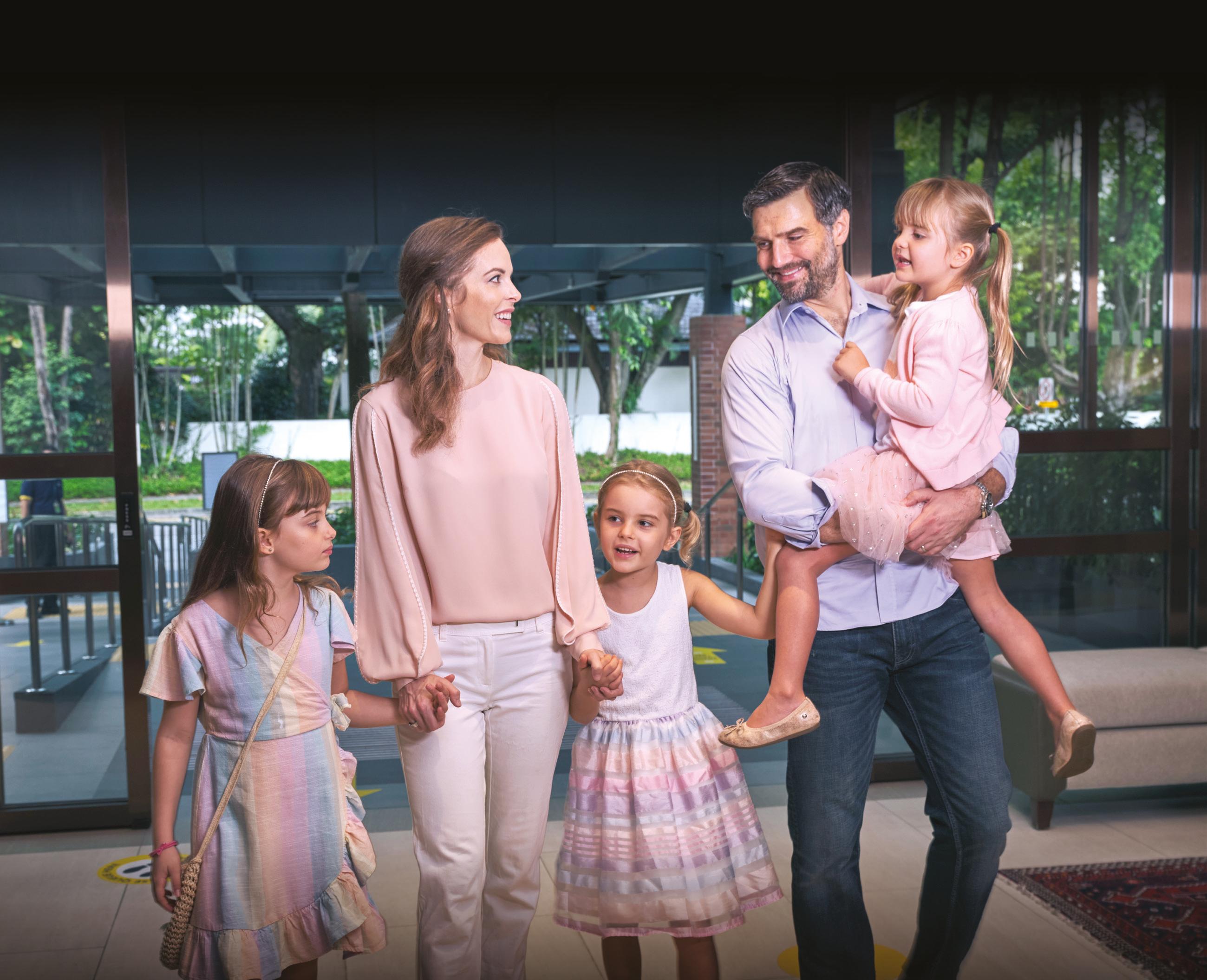







From Kallang’s Grand Old Dame to the Modern Marvel - The Road to Singapore Sports Hub
 By Asif R. Chowdhury
By Asif R. Chowdhury
Nothing quite brings a nation together like a competitive international sporting event. On certain occasions, more popular sports (such as soccer), can awaken an extreme and violent sense of nationalism resulting in social unrest and chaos. While such unwarranted chaos is not desired, and such energy is always better channeled towards more productive efforts, it nevertheless demonstrates the power of sports to unite people. So, it was only natural that as a young nation, having gained independence in 1965, Singapore felt it was crucial to have a decent and respectable sports venue to bring together this new city-state's multicultural and multiethnic citizens.
But Singapore already had such a sporting venue. The first stadium, the Jalan Besar Stadium, was built in the late 1920s during the British occupation. It was officially opened in December of 1929 by the then Municipal Commissioner of Singapore, RJ Farrer (after whom Farrer Road is named). The inauguration was kicked off with the very first official soccer match played between the Malayan Chinese and Malayan Asiatic teams which was watched by a crowd of some 7,000 spectators. Jalan Besar Stadium is considered the birthplace of Singapore soccer. For the following decades, it was the venue for many more exciting soccer matches, rugby, hockey games, and occasional festivals and parades.
During the Second World War, the Japanese occupation forces converted the stadium into a language center for teaching Japanese to Singaporean civilians. Once the war was over, the stadium was returned to its original glory, hosting many more matches and national events. The first Singapore Youth Festival was held there in 1955. The US men’s national soccer team (USMNT) played an exhibition game against the Singapore team in 1956. Jalan Besar was also the venue for the very historic first Singapore Armed Forces Day after it gained its independence. The stadium was shut down for renovation and expansion in December 1999. It reopened four years later, in June 2003, as the Jalan Besar Sports and Recreation Center with the addition of a public swimming pool.
While Jalan Besar was serving its purpose, the new government of Singapore’s new city-state appropriately decided it was time for a more prestigious, Olympic-size stadium. Such a venue was deemed necessary to foster not only a sense



of collective nationalism, but also a sense of national pride. The plan to build such a site had started well before the country gained independence. The search for a suitable location for a new and larger stadium began in the late 1950s. In the summer of 1963, the Singapore local government announced the plan to build the national stadium in Kallang Park, the site of an existing sports facility. It would be a massive undertaking comprising a covered stadium, two outdoor stadiums, and a swimming complex. The plan was geared towards hosting the Southeast Asia Peninsular Games. A 19-member committee was formed to oversee the planning and funding of the project.
Despite choosing the site and forming the committee, the project wasn’t fully started until Singapore gained independence in 1965. Othman Wok, the then Minister of Culture and Social Affairs, argued in Parliament that Singapore deserves an Olympic-standard stadium to domestically unite the people of the newly born city-state while boosting its national image internationally. Beyond national pride, he also argued that such a sports facility would increase the national interest in sports activities, which would help improve the overall fitness of the country’s youths. Indeed, his last point was a crucial factor, as the average serviceman recruited for the new country seemed to lack strength. In March of 1966, EW Barker, the Law and National
Development minister, declared that the stadium’s development and construction would be a top priority in Singapore’s infrastructure development plan. It was decided that the main stadium would be built first. As part of the planning process, Tan Beng Kiat, the chief architect of the Public Works Department, studied the design of several overseas stadiums. One of the venues he looked at was the Tokyo Olympic Stadium, where Japan had hosted the Olympics only a few years earlier in 1964. The design and planning of the new stadium were going to be a vast improvement from the existing Jalan Besar Stadium. Where Jalan Besar Stadium had a capacity of about 7,000 spectators with an area of 66,000 square feet, the new stadium would be able to seat 55,000 visitors with an area of 810,000 square feet.
spectators, the new National Stadium boasted 400-meter, eight-lane synthetic tracks; six fully air-conditioned squash courts; eight tennis courts; table tennis facilities; and a weight training area. At that time, it was the most iconic structure in Singapore and the largest stadium in the Southeast Asian region.
The grand opening of the new National Stadium on July 21, 1973, was a historical event. The country pulled out all the stops for the celebration. Prime Minister Lee Kuan Yew was present for the opening and gave a remarkable speech about the importance of the newly established venue. He admitted that the new stadium was indeed a massive and expensive undertaking by his government. He further elaborated that while the
The overall cost for the stadium complex was estimated to be around S$50 million. A stateowned lottery company, Singapore Pools, was established to raise funds for the construction. Proceeds from the lottery were used to pay for a substantial portion of the cost of the new stadium. Proceeds from other lottery schemes, such as Singapore Sweep and TOTO, were also used to pay for the project.
The new stadium's construction was kicked off on December 7, 1966, with Othman Wok driving in the first piling. By 1970, the foundation layout was completed and, by the end of that year, almost three-quarters of the construction was done. When the stadium was finally completed in June of 1973, three million bricks, 4,500 tons of steel and timber, and 300,000 bags of cement had been used for the construction. With an open-air design and much concrete structural frame, the stadium featured a barebones brutalist design, a fad during the period. Beyond the seating capacity of over 50,000
benefit of the stadium would be difficult to assess in monetary value, it could become a great social asset if it was “fully and properly used.” Among the many events held during the opening ceremony, perhaps the most memorable was a song sung by more than one thousand participants and an Olympic torch shot into the night sky.
The Singapore National Stadium hosted numerous sports, cultural, and entertainment events for the next three decades, including the 1983 and 1993 Southeast Asian Games. Many exciting soccer matches were played in the stadium, including the Malaysia Cup. Indeed, the nation invariably came together during these matches to show solidarity and support for the Singapore national teams. During these matches, as the fans cheered on their team, the stadium would often break into thunderous roars during the exciting moments which could be heard from miles away. This became popularly known as the “Kallang Wave.” Beyond hosting just sporting events, the stadium

was also the venue for several historic and memorable events, such as the exhibition match for the world boxing champion Mohammad Ali and concerts for the likes of Michael Jackson and Mariah Carey. It also served as the ground for a religious rally when Pope John Paul II visited Singapore in 1986. But perhaps the most important event the stadium hosted was the annual National Day Parade bringing the people of the new nation together and helping fill their hearts with national pride. The stadium hosted a total of 18 National Day parades.
With the dawn of the new millennium, as Singapore made its remarkable ascent from a developing nation to a developed one, it felt like it was time for its sports facilities to get another facelift toward modernization. The Committee of Sporting Singapore conducted a study and submitted a report to the government outlining a plan to promote a sports and physical activity culture. Based on the report, Abdullah Tarmugi, the then Minister of Community Development and Sports, recommended upgrading the aging national stadium to the parliament. In 2001, the government redeveloped the National Stadium and transformed it into a cluster of world-class sporting facilities called the Singapore Sports Hub. The plan called for a new stadium to replace the National Stadium, along with a new aquatic center, indoor arenas for special events, and recreation facilities.
The original plan called for the demolition of the National Stadium in 2008 to be followed by the new construction and completion of the new Sports Hub by 2011. In June 2007, a closing ceremony was

held at the old stadium titled “Field of Dreams – A Tribute to the National Stadium.” Just as Lee Kwan Yew had promised and envisioned, Kallang’s Grand Old Dame, as the old National Stadium is often affectionately called, had indeed contributed to the increased awareness of the importance of sports at a national level and helped unite the city-state many times over. However, due to the financial crisis of 2007 and 2008, the construction of the new Sports Hub was delayed, as was the demolition of the old National Stadium. Its demolition work finally started in September 2010, marking an era’s end.
The new Sports Hub development project was awarded to the Singapore Sports Hub Consortium (SSHC), comprised of a handful of private companies. This was the largest public and private enterprise partnership project undertaken in Singapore’s history. The construction work began towards the
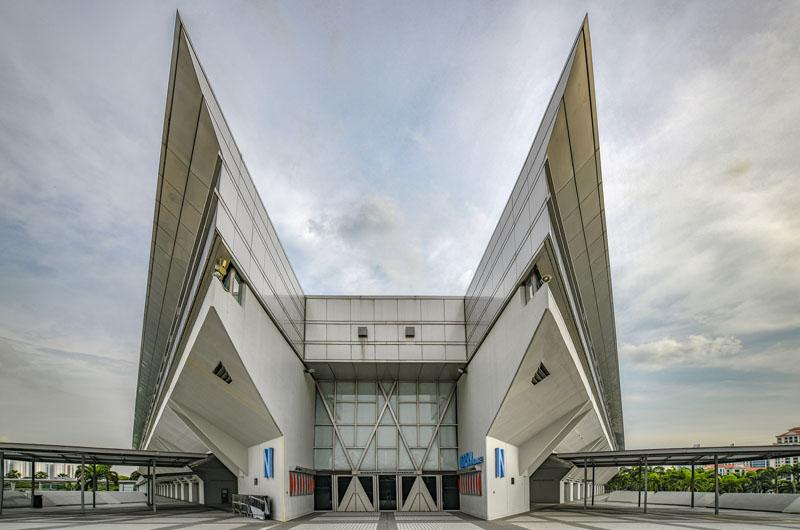
LIVING IN SINGAPORE 41
end of 2010, soon after the demolition of the old National Stadium, and it was completed in June 2014 for S$1.87 billion. Prime Minister Lee Hsien Loong officially opened the place in July 2015.
The most iconic landmark of the 86-acre Sports Hub is the grand stadium with its 810,000 square feet and 272 feet tall steel dome with a retractable roof. The roof is also designed to reflect sunlight to insulate the stadium from Singapore’s tropical heat. To reduce energy consumption, the design allows natural airflow to keep its 55,000 spectators cooler. It is the only stadium in the world that can be configured to play soccer, rugby, cricket, and athletics. It takes about 48 hours to change the arrangements to suit the configuration of any of these events.
The Sports Hub also includes an indoor stadium with a seating capacity of 12,000 visitors. The OCBC Aquatic Center features two Olympic-size swimming pools for swimming and diving competitions. There
is also an indoor sports facility known as the OCBC Arena. Additionally, a water sports center includes kayaking and canoeing facilities along the Kallang Basin and venues for various other sports such as basketball, netball, volleyball courts, and running and cycling paths.
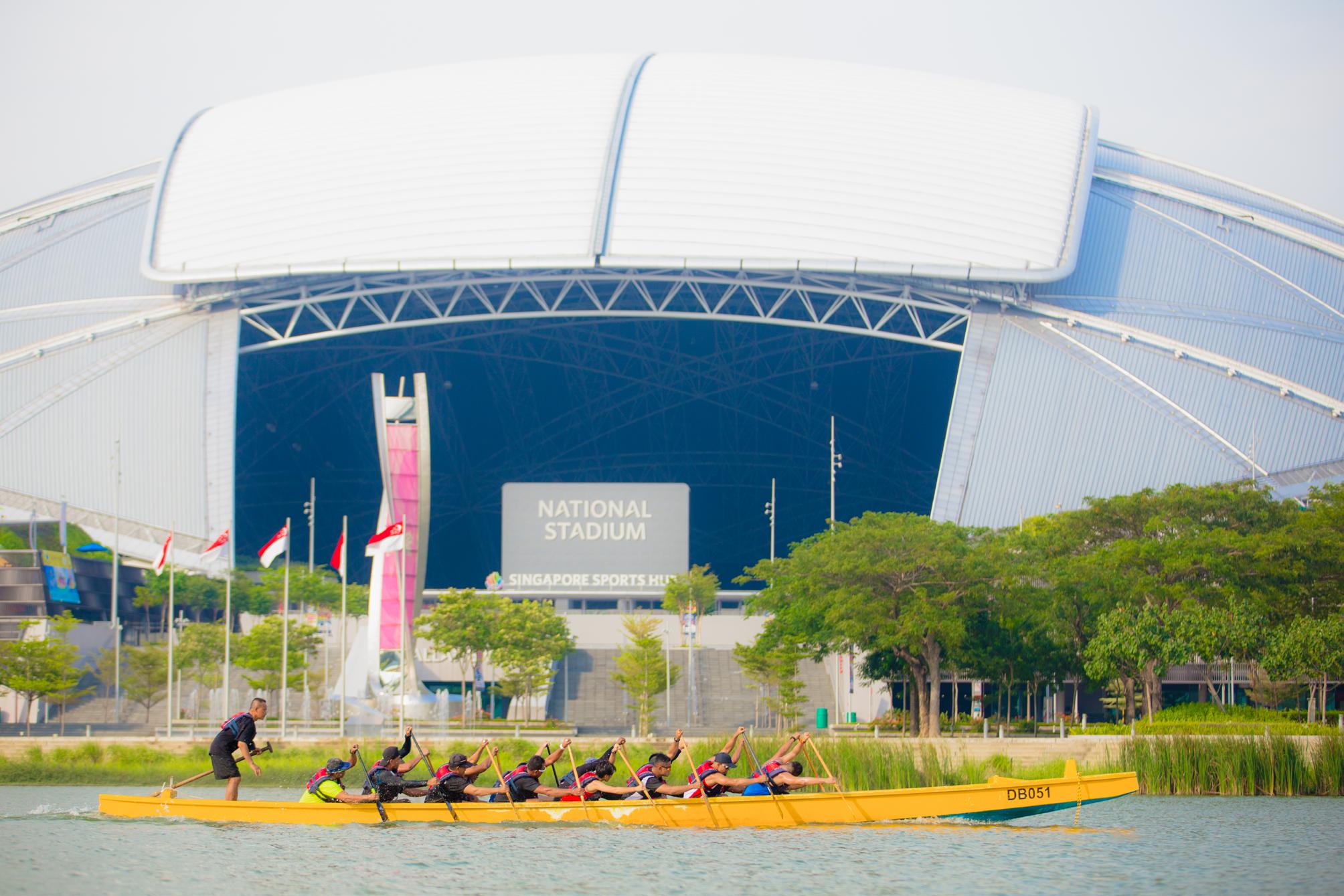
The inaugural sporting event in the new stadium was the World Cup Rugby 10s tournament in June 2014. Since then, it has hosted numerous national and international sports matches, concerts, and other entertainment events.
Today, the magnificent Sports Hub is the crown jewel of Singapore’s national and international sports scene. It blends perfectly with all the different upgrades, improvements, and development of the many infrastructures the island has witnessed since the start of the new millennium. Indeed, the story of Singapore’s stadiums is very much the story of the city-state’s meteoric transformation from a developing country to a developed nation.
42 LIVING IN SINGAPORE
Fun Your Year of
✓ ✓ ✓
Gear up for cool field trips. Make forever friends. Learn new outdoor skills.
Learn more at www.singaporeusagirlscouts.org.
Girl Scouts – receive a free Early Bird patch when you register by July 31
Volunteers – receive $10 off your membership using the code ThankYou23 until April 30

Everyone – Receive 15% off at the USAGSO Girl Scout Shop
Become a Girl Scout: www.usagso.org/join
Extended Year Membership available now.
For a limited time, purchase an 18-month membership $60 (Girl Scouts) $35 (volunteers) and keep the fun going through September 2024.
Registration is open on our website through August 31 for girls ages 5 to 18.

LIVING IN SINGAPORE 43
What to Do This Summer?
There is no shortage of choices when it comes to sending your kids to a summer camp in Singapore! No matter what your child is interested in, chances are there is a camp out there for them. Here is but a small selection of programs for kids ages five and up.
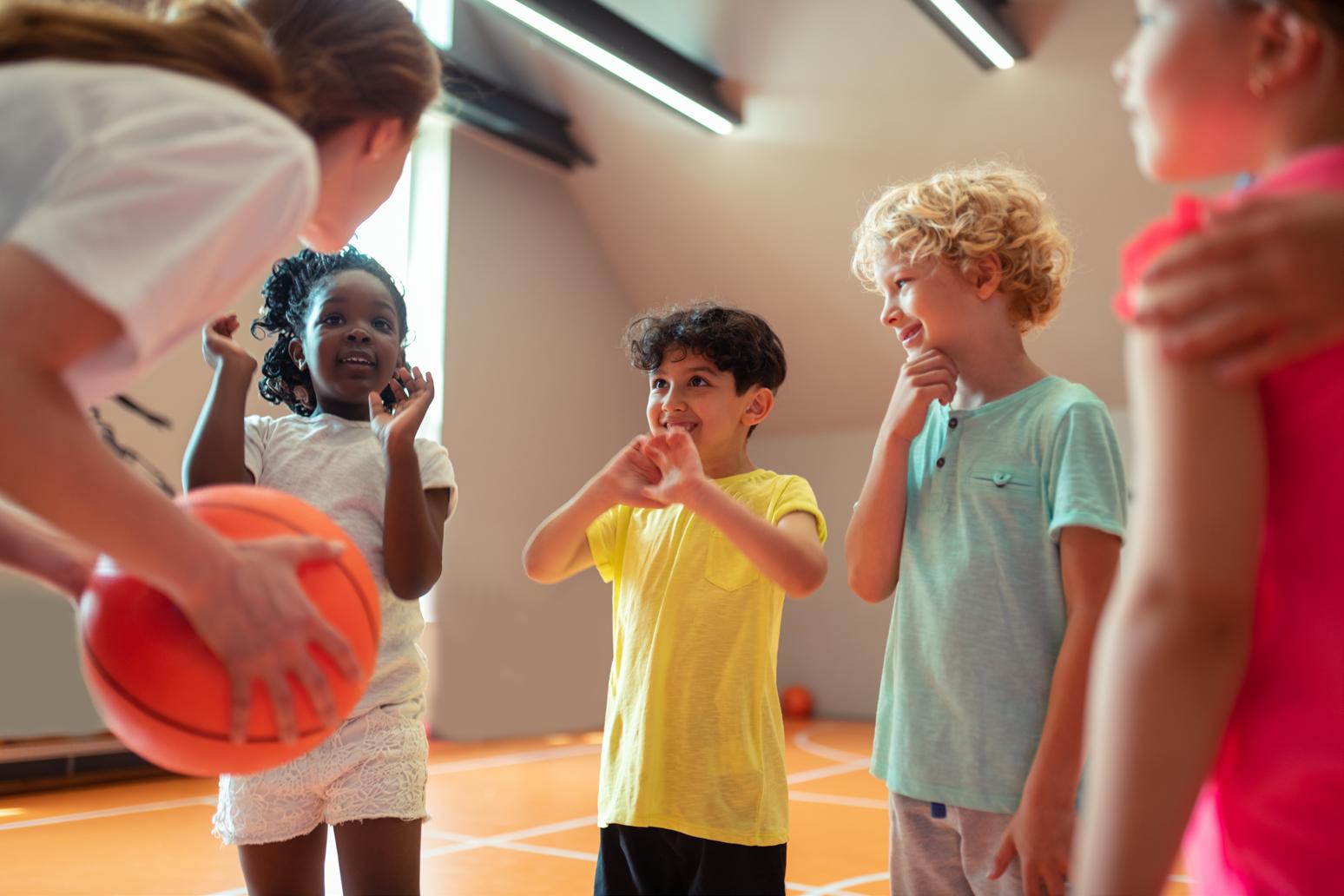
Sports, Outdoor & Active Camps
Tall Timber Holiday Camp
Outdoor School Singapore offers the Tall Timber Holiday Camp, which gives children a chance to learn about trees and their importance to humans.
They will also learn how to build a shelter to protect themselves from the elements using ropes and tying knots.
The Tall Timber Holiday Camp runs throughout June and July and is one of many camps
Outdoor School Singapore offers. Get more details here
SG Basketball Camp
SG Basketball’s June Holiday camp can introduce kids to the fundamentals of basketball or take their skills to the next level. The camp is held at both Chai Chee and Turf City throughout June. Get more details here
UFIT camps
UFIT offers a range of sports camps for kids, from rugby to tennis or pickleball, and Sports for Life camps. In the Sports for Life camp, kids will engage in various sports such as football, rugby, cricket, tennis, and lacrosse, getting a little bit of everything. Find more details here
SUMMER IN SINGAPORE
The Yard
If gymnastics, tumbling, or trampolines are what your child loves, The Yard offers both recreational and competitive camps. Themes for the weeks include Hawaiian aloha, safari, circus, and superhero, sure to burn off lots of extra energy! Find out more here.
Arts, Music, and Variety Camps
The Mindful Camp
For a well-rounded experience, The Mindful Camp program includes mindfulness, art, time in nature, and sports play. Kids can try new experiences, have fun, and create memories with new friends they meet! For more details, click here
Objectifs Junior June School Holiday Camps
Objectifs Junior is holding a series of workshops through hands-on activities. Kids will express themselves creatively through visual story-telling
using photography, filmmaking, and animation. Registration is available here.
SAS Summer Semester
The SAS Summer Semester offers a wealth of opportunities for kids! Students in preschool and pre-kindergarten can explore topics like STEM, baking, and cultural exploration through language learning and art. Elementary school students can enjoy STEAMbased projects, video game design, and vlogging. Middle and high school students can
explore topics such as creating music videos, local ecosystem exploration, and Singapore’s sustainability efforts. With more than 130 courses on offer, there really is something for everyone. Learn more and sign up here.
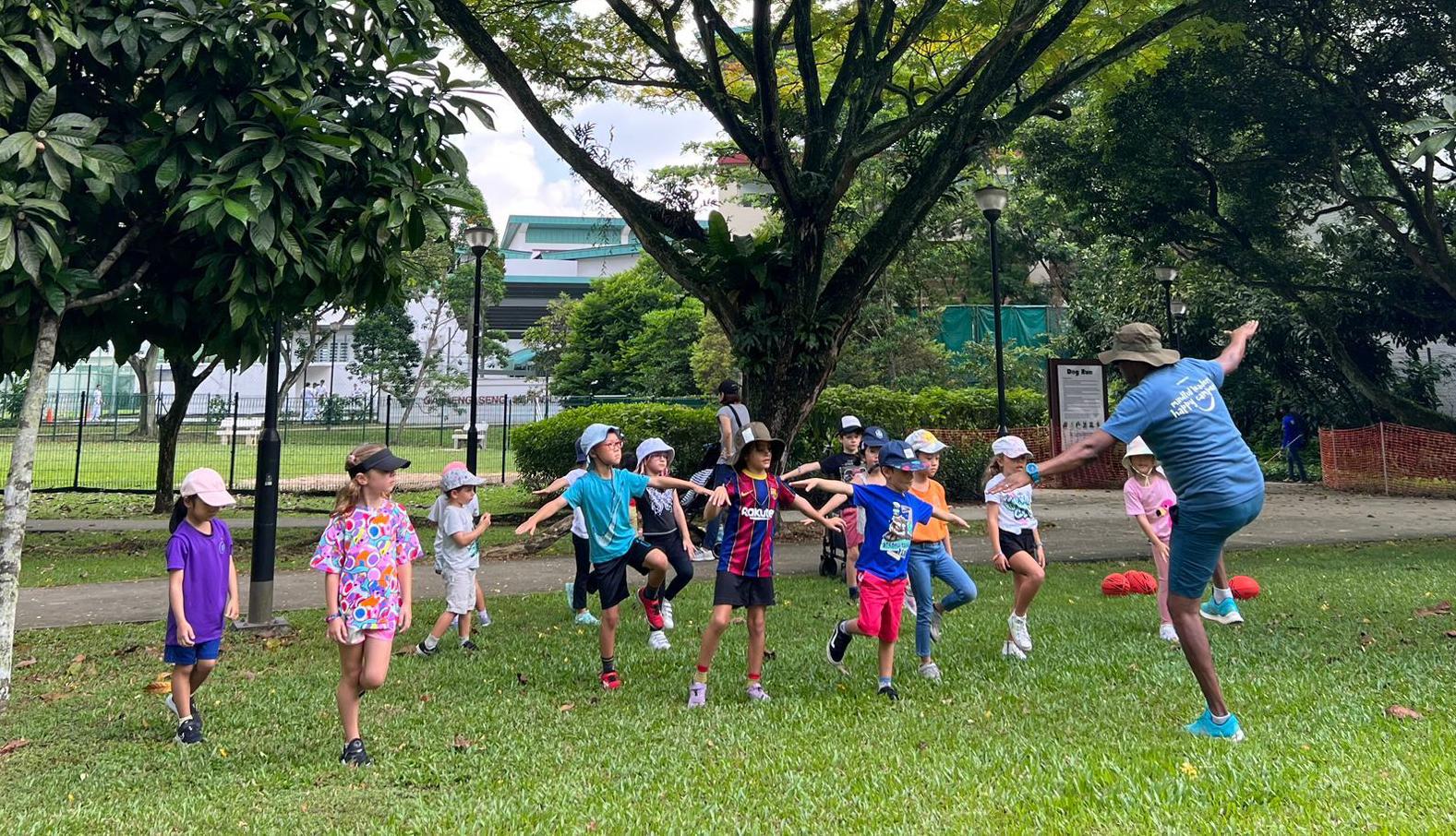
Newtonshow
Newtonshow is another camp offering a wide range of activities. They are hosting a series of exciting science and multiactivity camps this year, along with Maker.sg camps cover 3D modeling, Lego EV3, and basic programming, among other intriguing topics!
From Space Odyssey and Science
Discovery-themed camps to art and cooking, there is something that will appeal to every kid, no matter what their interest.

Meanwhile, Harry Potter fans can unleash their inner witch or wizard, participate in magic wand workshops, play Quidditch, and make potions!
Learn more here
Coding, Robotics & STEM Camps
Whyte Labs’ Robotics Workshops
A specialist in Robotics workshops, Whyte Labs has a series of holiday programs for budding engineers. From conceptualizing and building smart assistive devices to making walking robots, tweens and teens ages 11 to 16 will be empowered to program their inventions. Find out more here.
Level Up Your Holidays with XCL Camps
Coding Camps by Coding Lab
Discover the wonders of coding this June holidays at Coding Lab’s Coding Camps! With an MIT-inspired, award-winning curriculum taught by elite instructors and an impressive track record of churning out competition winners locally and globally, your child will surely be in great hands!
XCL Camps presents students with a collection of exciting and engaging programs to continue their learning journey and to level up their holidays. Your child can enjoy the most exciting adventure with XCL Camps throughout the year.
Coding Lab provides a thoughtfully curated curriculum for ages 5 to 18, with something for everyone. From making your first game or animation to discovering the secrets behind popular games like Geometry Dash, Artificial Intelligence technology, Python role-playing games and computer graphics, and web apps – there’s so much to create this summer holiday, so grab a slot now!
At XCL Camps, we are passionate about helping children explore and enhance their passions, interests, and skills. Whether your child is sporty and active or enjoys tinkering with their gadgets, there is always something for every child! Our theme camps include activities for the Athlete, Scholar, Artist, Techie, and All-rounder. The camps are designed to provide structure and routine for children in a safe and conducive learning environment.
Delivered by passionate and engaging educators, children aged 3 - 16 can participate in various exciting activities from 19 June to 28 July. Children are encouraged to try new things, learn new skills, make new friends, and have lots of fun!
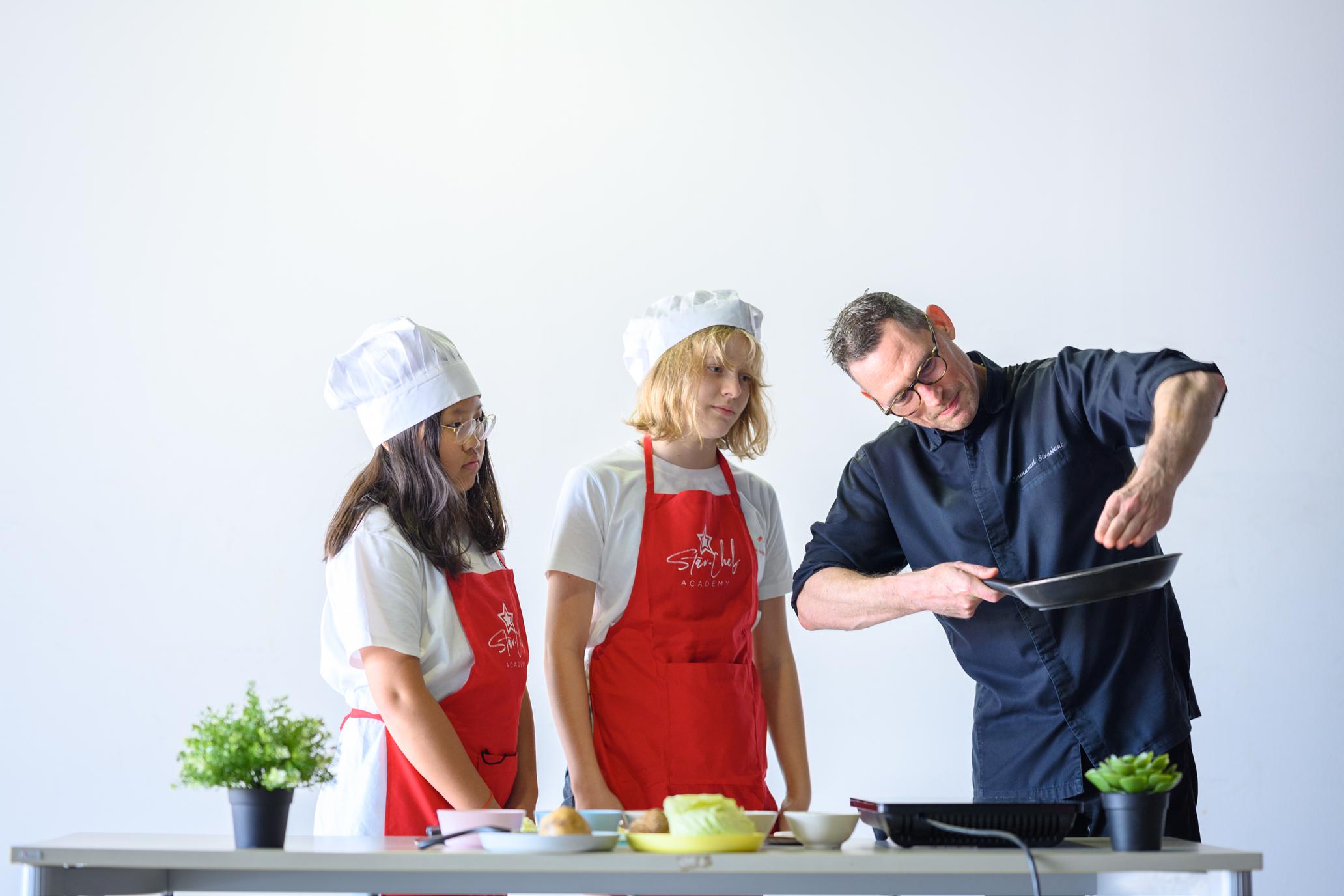
Excited about our camps? E-mail info@xclcamps.com or call us at (65) 6808 7324 to know more. Or, visit the XCL Camps website to start exploring our latest holiday camps offer.
We can’t wait to welcome XCL Campers for an exciting adventure!
Camp Asia is the region’s leading and most trusted holiday camp program, with an outstanding choice of activities for children ages 3 to 16. Now in our 11th year, we are certain that you will find an activity that perfectly fits your child’s interests and abilities.
From our popular camps such as Multi-Activity, Super Chef, Super Basketball, and Lego Robotics to brand new camps that we are constantly innovating for big holiday seasons! This Summer, we are introducing two awesome camps, Content Creators and Motorsports Jr that kids will definitely have loads of fun and learn valuable skills.



Camp Asia, part of Cognita Schools Group, are committed to safeguarding and promoting the welfare of children and young people and expects all staff, volunteers, and other third parties to share this commitment. Before confirming an appointment, safer recruitment practices and pre-employment background checks will be undertaken.

At Camp Asia, we focus on providing an exciting, memorable experience for your child and convenience and peace of mind for you. Camp fees include materials used in camp activities, a Camp Asia t-shirt, nutritious food, and snacks with options

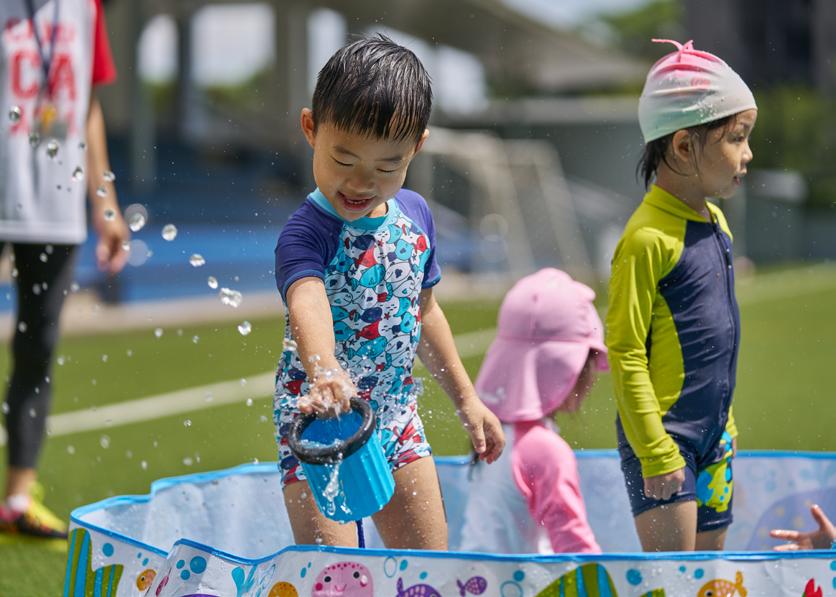

for those with dietary restrictions. Dedicated bus services with many pick-up points are offered at only $120 per week. So, rest assured that your child’s holistic well-being is taken care of from pick up to drop off.
Held every day from Monday to Friday (except public holidays) from 9 am to 3 pm, your child will have an absolute blast and make wonderful lifelong memories with friends worldwide! Come and try a camp or two next holiday seasons in Spring, Summer, Fall, and Winter. For more updates, head to our website, www.campasia.asia, and follow us on Facebook and Instagram.
Age of Campers: 3 to 16 years old
Website: www.campasia.asia
Email Address: Info@campasia.asia
Parent Hotline: +65 6289 5888
ADVERTORIAL


HOLIDAY FUN! Fantastic activities, stellar facilities & safest environment campasia.asia +65 6289 5888 info@campasia.asia @campasia

CHIANG MAI
Rose of North Thailand
By Sunayana Bose
Recently, my family took a short holiday trip to Chiang Mai, the second largest city in Thailand after Bangkok. It is culturally significant and historically a fascinating city. At one time, this was the capital of the ancient Lanna kingdom and is near Myanmar’s border. Thai is spoken as the local language and is understood by most people in Chiang Mai. English is spoken mainly at tourist spots and travel-related attractions there. The population here is approximately 1.2 million people.
Located on a plain at an elevation of 316m, it is surrounded by mountains with unspoiled rainforests, tranquil Buddhist temples, elephant sanctuaries, large shopping markets. Besides having great food, it is also very safe for tourists, and is a wellmaintained city. The city’s green cover provides health, wellness, and ecological benefits. People are, by and large, amiable. The best time to visit is from November to February. The city has numerous places of interest for visitors.
Wat Phra That Doi Suthep
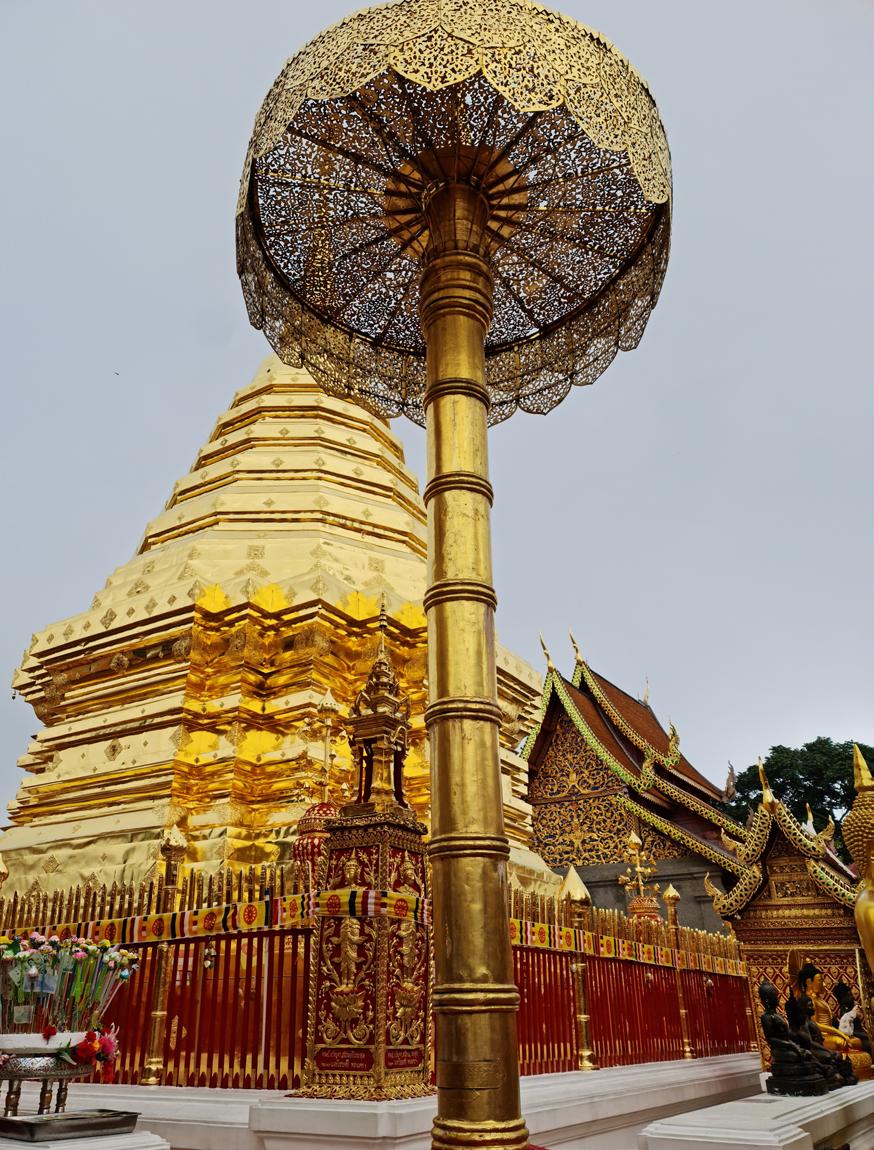
This Buddhist temple is the most famous among all other temples and is located 15 kilometers from Chiang Mai. “Doi Suthep” is the name of the mountain on which it is located and is at an elevation of 3,520 feet. From where one is dropped off by car, the temple can be reached by either climbing 309 steps or taking a cable car to go up and down for 50 THB (Thai baht, the local currency) per person. That’s about SGD$2. Reaching the top and seeing the shrine, holy Buddha relics, giant bells, golden pagodas, and a golden chedi is gratifying. A splendid view of the city can be seen from the temple.

Wat Phra Singh
This is Chiang Mai’s largest and most magnificent monastery. The temple holds several Lanna-style buildings. The oldest edifice of the Wat is the main stupa, built in 1345. The gold and copper statue of a seated Buddha is marvelous. The temple is located in the city center of Chiang Mai and is made with intricate goldwork.
Wat Phan Tao
This temple is located in the city’s old quarter and is famous in Chiang Mai. This Buddhist temple is made with teak wood, constructed during the 14th
50 LIVING IN SINGAPORE
century. Wat Phan Tao means “temple of a thousand stoves/ ovens.”

Elephant Nature Park
Established in the 1990s, this sanctuary is located about 60 kilometers from the city and is a rescue center for elephants, dogs, buffaloes, and cats. It was founded by Lek Chailert, a lady widely known for her work in elephant conservation, who has won multiple awards for her work. This is one of the many ethical elephant sanctuaries in Chiang Mai and other parts of Thailand. The aim is to improve the quality of
life of the elephants mistreated in their early years. The cost is 2,500 THB per person/day (about SGD$100), with an
option to stay overnight at an additional cost. Guests are allowed to feed the elephants, but not bathe them.

LIVING IN SINGAPORE 51
Chiang Mai Night Bazaar
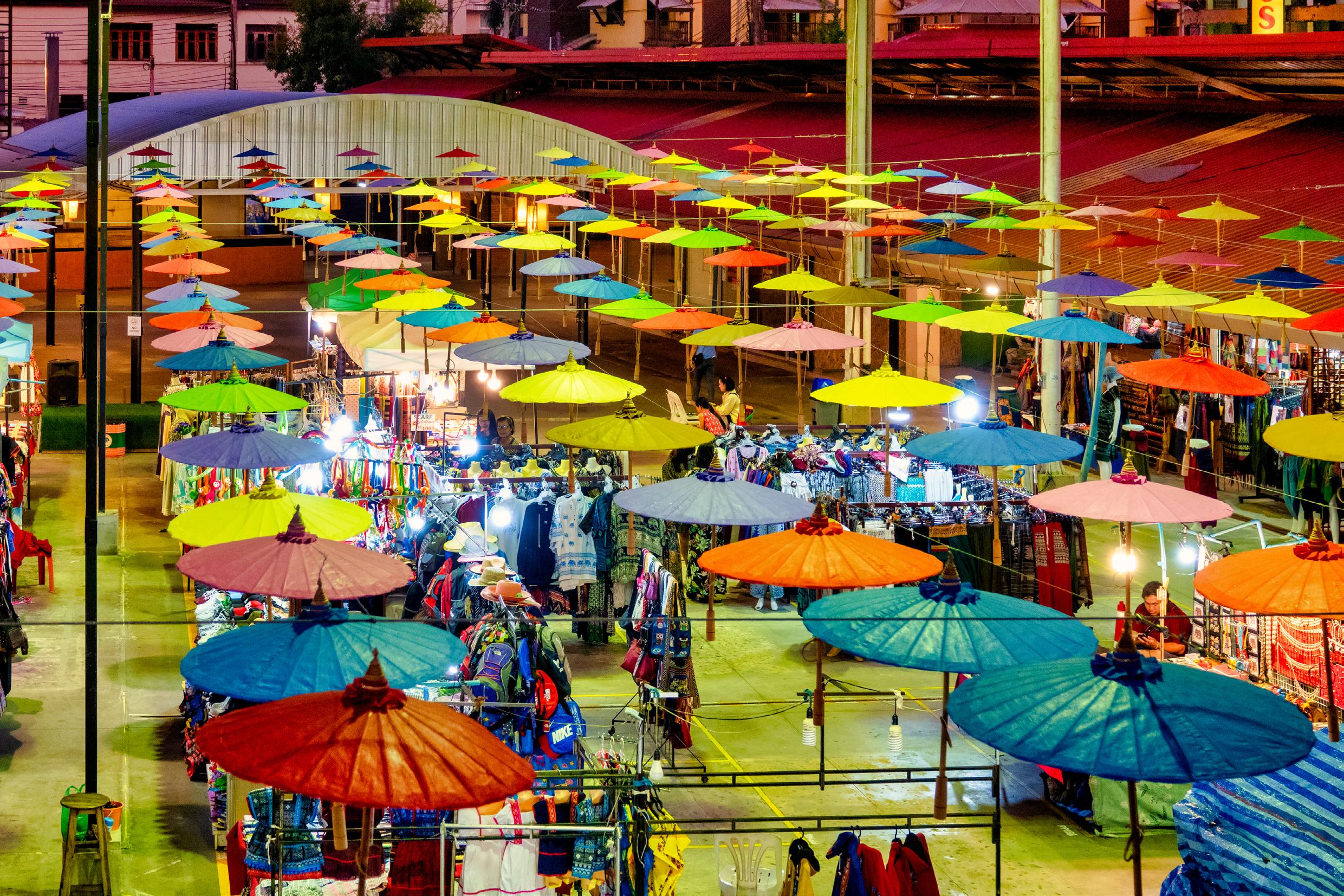
This is one of the most popular tourist attractions in the city. It is famous for clothing, handicrafts, jewelry, portrait paintings, spices, bed linens, and more. It is a great shopping experience with a lively environment, including live music.
Villagers are skillful in crafts such as wood carving, silverwork, and lacquerware. The city of Chiang Mai is also known for its coffee culture. With hundreds of cafes, it is one of the best destinations for coffee lovers and is Thailand's
coffee capital. Various kinds of delectable Western cuisine restaurants are also available.
Ranging from its rich history, excellent cuisine, flourishing culture, and luxury hotels and resorts, Chiang Mai has many things to offer. We returned to Singapore refreshed and brought back some of the best memories from this unique city.
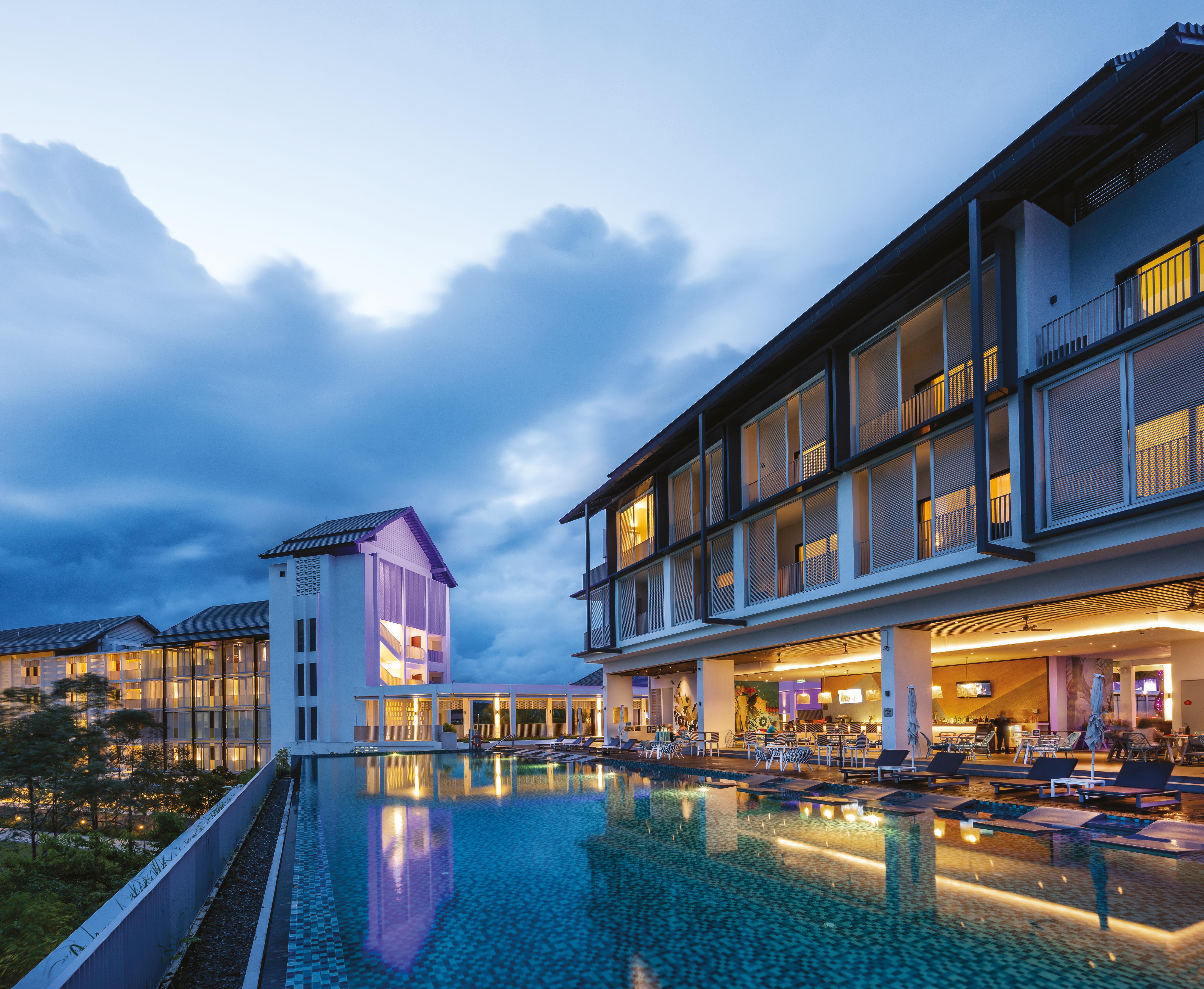
The Art of Repatriating
By Melinda Murphy
Moving home can be far harder than moving overseas.


It seems counterintuitive, really. You're moving home. You know what to expect there and probably have friends and family there. Heck, you may even be moving back into your old house. It should be an easy move, right? But the truth is, moving home is far more complicated than moving overseas. You've changed, and so have the people you left behind. Packing up all your stuff to return is harder than before because the world has changed.
Physical Move
We'll get to the emotional stuff in a bit. Let's start with the easier stuff, the physical move.
Kelly Cheong, Regional Sales Team Lead for Allied, shared some good news, "The cost of a container is down dramatically from a year ago during the Covid crisis. The comparison of freight cost to the US has dropped from last year to this year by about an average of four to five times per container. But take note: rates can increase from May onwards as shipping lines are declaring the possibility of a general rate increase."
Cheong added: "It's important to plan ahead. Peak seasons are May to July and November to December. During these periods, you need to book approximately 1-2 months in advance and approximately 4-6 weeks in advance during non-peak times to secure the crew as it is based on a first-come, first-served basis to avoid the disappointment of no availability as it can be quite common."
Questions to Ask
Be sure to check with your HR department or Mobility Manager on what your package includes. Ask a few key questions:
• What does your repatriation package cover?

• Do you need to purchase any insurance for the shipping of household goods?
• What is your budget given?
Container Options
There are different options depending on how much you're moving:
• Groupage: Groupage shipments are based on a shared container basis and are shipped at the earliest opportunity. Shipping and transit times offered for groupage are an estimated guide only because sufficient space and the number of shipments needed to consolidate the
container are prime factors determining when a load can be shipped.
• 20-foot container
• 40-foot container
• 40-foot High Cube container
Working with Your Belongings
Sometimes it's cheaper to sell big, bulky items and repurchase new ones back home, such as mattresses. Leave IKEA furniture behind, but if you've picked up some unique things in Asia that you may not be able to get back home, like a Chinese cabinet or two, take them with you. Cull and take back only what you really love. And be sure you clean everything before you pack it all.
There are many Facebook groups where you can sell your items or other options, such as Carousell.sg
When working with your movers, point out the sentimental and fragile items you are especially worried
about. Movers can build wooden crates to protect special or delicate items.
You also want to carry some things like jewelry, medicine, computers and special toys for the kids. And of course, there are some things you can't bring.
How Long Will It Take
The standard shipping time from Singapore to the US is approximately 7-10 weeks. However, labor shortages and supply chain issues could cause delays, so bringing the things you need is important. Be sure to check with your company if they're willing to do an air shipment so you can have the necessary items right away.
Cheong gave a heads up, "There may be some arrive charges incurred via sea and air shipment."
• Destination terminal handling
• Port fees/wharfage
• Customs inspection
• Container detention
• Access at the delivery address
Charges could range from $50 - $1500+ depending on the mode of shipment.
Moving Your Heart
Repatriating is different for everybody. Some families can't wait to go home. Others are going home reluctantly. Either way, what you expect home to be like is often far different than reality.
Dr. Suzanne Anderson, Director and Counselor at Restorative Community Counseling, has given a talk on repatriating for the American Association of Singapore for many years.
Moving home is often more challenging than moving overseas, but there are some strategies that you can employ to make everything go a bit more smoothly.
There are some variables to consider when moving, and each can determine how easy or hard a move will be for you. So you need to take stock of these and go into the move with your expectations realistically set.
For starters, Dr. Anderson says to build a RAFT.
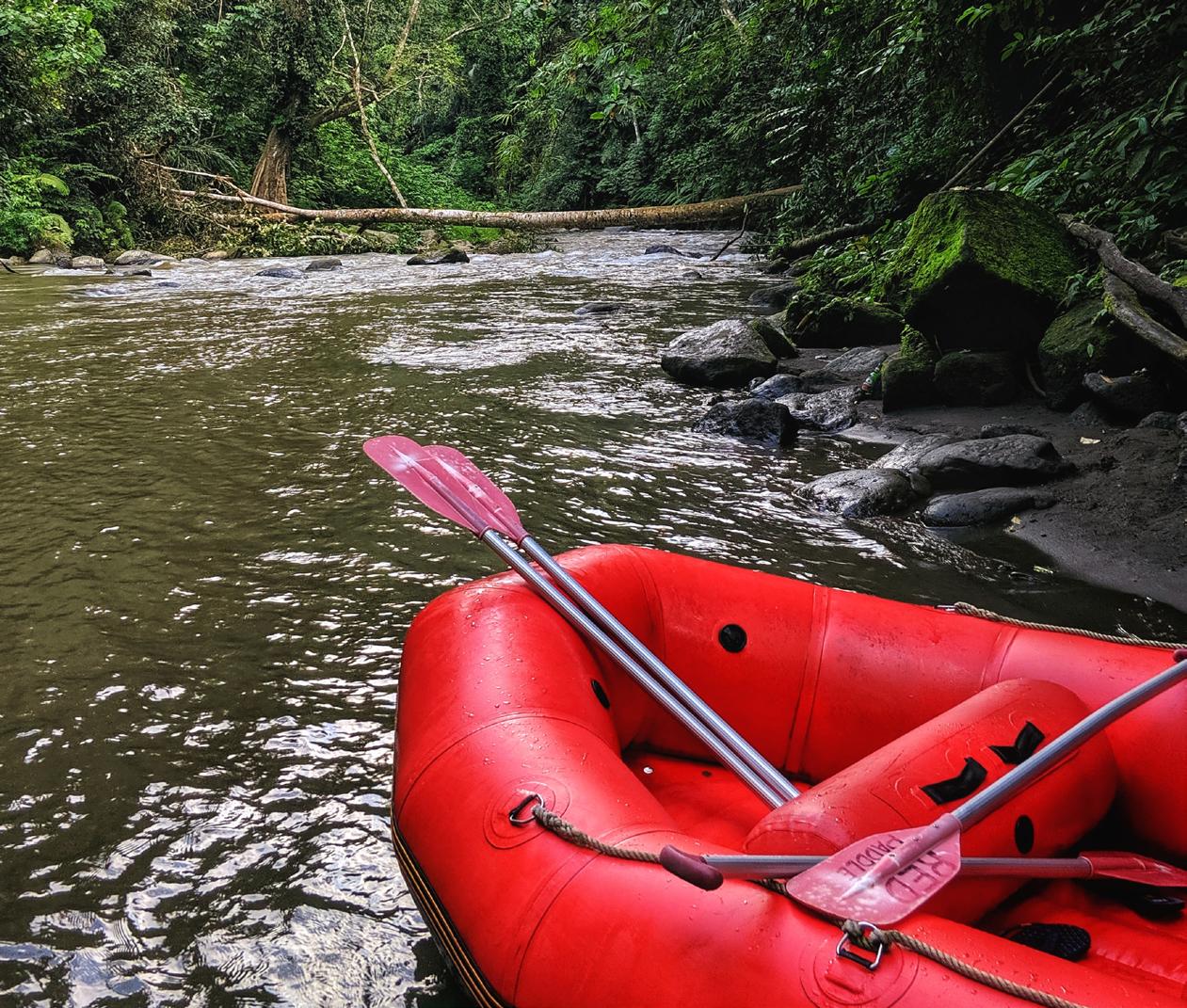
R - Reconciliation
Be sure to leave Singapore with relationships in a good place. People often don't know how to say goodbye, which can sometimes create tension. Kids, in particular, don't have the skills to say goodbye well, and they can sometimes break things off very suddenly with friends, as saying goodbye is awkward or painful.
Perhaps some relationships have had some trouble in the past. Be sure to make an effort to reconcile these relationships especially. Even if the friend on the other end doesn't receive your overtures well, reaching out is essential for your psyche as you leave.

A - Affirmation
Strengthening the relationships we have made before we leave is important. If you look at a map of the world, it seems like you know somebody everywhere on the globe. Kids, in particular, have friends scattered in countries on every continent. And these relationships can continue via Facebook, Snapchat, or other social media. It's important to affirm these relationships before you leave. In many cases, the friends you've made here have been your family away from family. Make sure you acknowledge that.
Helpers are also a special consideration. For many adults, the helper is an employee, but that relationship is often more important for kids. Children may have a much stronger connection, so they need more options for saying goodbye, keeping in touch, and acknowledging the importance of the relationship. Helpers can also grow very attached to the children and be heartbroken by saying goodbye to their family.
F- Farewells
You must do a proper farewell for people, places, pets (if they're not coming with you), and even possessions you give away. While there may be a ton of excitement about going home, there is also a lot to mourn. Be sure to visit special places one last time. Take lots of photos of everything so you can remember it correctly. Landscapes can change, so take pictures to document how you remember special spots. Often, people say they regret not taking enough photos of people and places that were special to them.
56 LIVING IN SINGAPORE
If people want to throw you a party, let them. Not only do you need to say goodbye, but they likely need to say goodbye, too. The ritual of farewell is an important one.
T - Think Destination
All the other letters in RAFT have been about looking backward. The "t" is all about looking forward to the future.
For starters, you need to look at your expectations. You may be returning to the same house, and the community is the same, but you are not the same, and neither are those you left behind. You especially have changed in ways that are hard for them to understand. You've lived in a foreign country, traveled regionally, made friends from different cultures, eaten new foodsthe list goes on and on. People from your old community likely have the same mindset they were when you left. So it would be best to think about how you've changed ahead of time. Knowing what to expect is key.
Before, you may have spent all your holidays with family, but now you may have gotten used to traveling over the holidays and want to keep traveling. It's vital to set expectations with family and friends - and with each other about what holidays will look like.
Division of Labor
Ask yourselves, "What are three things you least look forward to about the move? And what three things are you most looking forward to?" Check that these items are realistic, then calibrate them to your expectations.
It's essential to define what everybody's role is going to be at home. Here, you may have had a helper doing laundry and cooking. Now, you're back to reality. Who will do the marketing? Cooking? Cleaning? Laundry? How will you equitably divide the chores? How will the kids pitch in? Will you have a yard now? Who will take care of it? Thinking you'll just figure it out can lead to resentment.
It's critical to discuss who does what.
Here are some great questions to start the discussion:
Dr. Anderson recommends a book called "Fair Play" by Eve Rodsky, a corporate executive who had a baby and returned to work. She found she was doing more than her share. So she came up with great strategies for dividing the labor.

The book has a game that comes with it to help couples and families divide all the tasks for running a family. You play this game to try to have an equitable distribution of tasks. It's a fun resource to help you consciously make decisions about the division of labor, which can save real heartache as you settle in back home.
The Seven-Year Rule
If you've lived away from your home for seven years, you're considered a pseudoimmigrant when you return. You've been gone long enough to have changed a lot on the inside, even though you may look the same on the outside.

LIVING IN SINGAPORE 57
But the time to pseudo-immigrant status can be shortened if the country you're turning to has gone through a time of enormous turmoil. Guess what? The US has gone through enormous turmoil, folks. Covid, political change - things back home will feel very different when you return.
You may even be shocked when you return over how the US has handled Covid. We are used to Singapore's strict restrictions, and everybody follows the rules. The US has been sharply divided on vaccines, masks, and more. In many ways, the US has gone through more trauma with Covid than Singapore has - certainly far more death.
Dr. Anderson says that many people in the US seem to be really scattered. They can't hold onto information as they used to and don't even realize it's happening. Because of the Covidrelated trauma in the States, many exhibit signs of trauma and stress, such as irritability, difficulty focusing, low concentration levels, and more. So be prepared for this, especially if you are returning to run an office. Employees may be exhibiting signs of real stress or mental health issues.
Making New Friends
You can find your tribe anywhere, but it might be harder than you imagine. Old friends might still be wonderful, but you'll need somebody to talk to about your overseas life. Here, everybody is an expat in the same boat, eager to make friends and share experiences. Back home, people are settled and not always keen to open their friendship circle.
It's hard not to talk about weekend trips to Bali or the cool item you picked up in Vietnam. And, sadly, most people don't really care, including your own family.
Studies estimate that about 10% of adults and 5% of kids are interested in an expat's life overseas. These people are unique, and expats will gravitate toward them because they long to discuss their experiences.


Face it; most people just don't want to hear you say, "Well, in Singapore, I did this," or "In Singapore, I ate that." It gets old hearing somebody constantly talking about another place. We do this because memories are anchored spatially, so we have to consciously not constantly talk about our old life. Instead, try consciously talking about the same thing without the intro of "In Singapore." "I did this" or "I ate that" is perfectly okay and more relatable to others.
Moving the kids
Kids are far more resilient than we realize. They make friends easier than adults, often bonding over sports or some cultural phenom. Kids are pretty adaptable as they live in the present much more than adults. Still, we, as parents, need to help them adjust.
The disconnect is often harder for older kids. Singapore is full of
freedoms that may not be safe in other countries. Schools here are all about college prep, whereas schools back home are not. The change can be disconcerting for teens.
To help your kids, go onto the school's website and go beyond what the school offers. Look at the details, not the big things. What are the kids wearing? What are they talking about? Go hang out at a shopping mall. What are kids wearing on the weekends?
Find cultural guides in your community, be it a cousin or a friend's child. Help your children figure out the "in" TV shows, games, apps, and social culture. You can even help facilitate these conversations by saying, "So what's the big TV show everybody is watching here? What do people do for fun around here?"
Children often get frustrated when somebody mispronounces a term or dogmatically says something that the child knows isn't true because they've been there. Kids then try to correct their teacher, and the teacher gets defensive and entrenched. To avoid this, you can try to prepare teachers ahead of time, "Here's what you need to know about my kids. They have traveled across Asia and have seen many things. They have friends from multiple cultures. My kids may have strong opinions." This way, teachers aren't caught by surprise.
Make your home a safe place to talk about things, suggests Dr. Anderson. Ask your kids lots of questions. "Did any weird stuff happen at school today? How is it coming back? Did anybody react unexpectedly to anything you said at school today?" Let your kids know it's okay to talk to you about what's happening in their repatriation experience. Don't try to force them to be happy. It'll take some time to adjust.
Settling in
How long does it take to feel "normal"? How do you recognize whether moving home works for your kids – or you?

They say it can take up to two years for home to feel like home again. Your job is to dive right in, try your best, and settle yourself. Model what a good repatriation experience looks like for your kids. In attempting to find a new life for yourself, the kids will try to do the same.
In the meantime, realize it takes time and allow yourself to adjust. Book a vacation to reconnect to that international life you're missing.
Become an expert on Singapore for people moving there. Tell relocation companies you're willing to talk to expats moving to or from your country. Even your children can help other children who are moving.
Embrace your reality
When we think of going home, we think we can relax. We don't put on our adaption hat, but adapt we must. We need to take all the skills we used to adjust when we moved overseas to move home. If instead of thinking of it as home, think of it as the next adventure, you'll find it easier to adjust.
We wish you the best of luck as you move home. Singapore will miss you!
Want to learn more about Allied? Reach out to concierge@sirva.com. You can reach Dr. Anderson at www.rccounselling.com





































































SINGAPORE The best way to stay best-in-class is to keep getting better. thinkorswim isn’t just a suite of platforms made for the trading-obsessed—it’s made by them. We use real feedback to improve our platforms, giving you the innovative features traders ask for most. Visit tdameritrade.com.sg to learn more. TD Ameritrade Singapore Pte. Ltd. (Reg. No. 200902152D) is licensed by the Monetary Authority of Singapore and does not provide tax, legal or investment advice or recommendations. Products and services offered in Singapore are provided by TD Ameritrade Singapore Pte. Ltd. and nothing in the published material is an offer or solicitation to conduct business in any other jurisdiction. This advertisement has not been reviewed by the Monetary Authority of Singapore. TD Ameritrade Singapore Pte. Ltd. is a subsidiary of TD Ameritrade Holding Corporation. TD Ameritrade Holding Corporation is a wholly owned subsidiary of The Charles Schwab Corporation. TD Ameritrade is a trademark jointly owned by TD Ameritrade IP Company, Inc. and The Toronto‑Dominion Bank. © 2023 Charles Schwab & Co., Inc. All rights reserved.
All AAS Members are now also CareerSource members! Take advantage of CareerSource services and events as part of your regular family membership.

CareerSource services are perfect for individuals in Singapore who are:

• job hunting in Singapore
• contemplating a career change
• looking to get back into the workforce
• wanting to further develop their professional skills
• considering entreprenuership
• interested in personal development
Female AAS members can also join PrimeTime events at PrimeTime member cost.
Join our various networking groups!
Metworks (Men's Networking)
Where "grabbing a drink with the guys" meets "making great connections" A different venue every month, same good time with great guys!

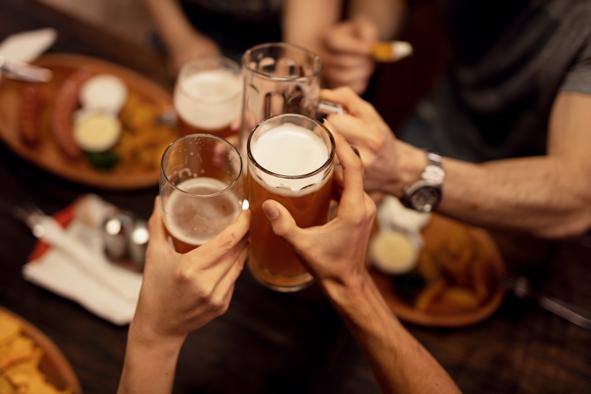
Young Professionals & Newbies
Join
Freelancers & Small Business Owners

Book
CareerSource Advisors
a conversation!
 Join fellow young (and young at heart) professionals for Happy Hour! Grab a drink, find the AAS tables, and strike up
Join fellow young (and young at heart) professionals for Happy Hour! Grab a drink, find the AAS tables, and strike up
our networking sessions to brainstorm, problem-
share
solve and
challenges, ideas and best practices.
a session with one of our experts to get career counseling, help with your resume, coach your small business, and more.















 By Ashok Lalwani
By Ashok Lalwani

































































































 By Victoria Jurado, BSA Troop 1010G
By Victoria Jurado, BSA Troop 1010G


































 By Isaac Chua, BSA Troop 10
By Isaac Chua, BSA Troop 10










 By Ken Nabors
By Ken Nabors

























 By Asif R. Chowdhury
By Asif R. Chowdhury












































































 Join fellow young (and young at heart) professionals for Happy Hour! Grab a drink, find the AAS tables, and strike up
Join fellow young (and young at heart) professionals for Happy Hour! Grab a drink, find the AAS tables, and strike up